Biography
Home
Nelson Mandela Top 7 Leadership Lessons for a Better World
#FreedomFighter, #FromPrisonToPresident, #HistoryVerse7, #MandelaMoments, #NelsonMandelaLegacy, Discover India’s Heroes. Feel Their Fire, History That Inspires. Stories That Stay., India’s Untold History—Reimagined, Timeless Tales. Modern Impact
Abhishek Chavan
1 Comments
Nelson Mandela Top 7 Leadership Lessons for a Better World
🧠 Introduction: Nelson Mandela — A Legacy That Refused to Break
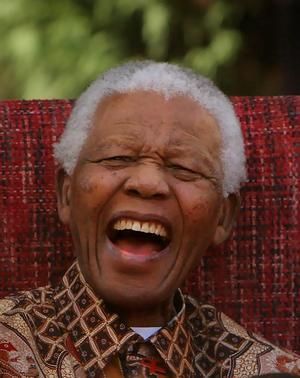
“He walked out of prison with no chains on his soul. Nelson Mandela didn’t just forgive—he rebuilt. Not with bricks, but with belief.”
Nelson Mandela was not just a man—he was a movement carved from endurance. Born into a land fractured by apartheid, he chose not to bend to injustice but to rise above it. With every year he spent behind bars, every speech he delivered, and every handshake he offered to former enemies, Mandela became a living symbol of reconciliation, resilience, and radical hope.
In a century scarred by division, Mandela stood as a bridge—between revenge and redemption, silence and dialogue, oppression and democracy. He didn’t just challenge a regime; he challenged the very idea that hatred must answer hatred. His voice, calm yet commanding, carried the weight of a people denied their dignity. And with that voice, he rewrote the future—not just for South Africa, but for every soul yearning to be free.
Nelson Mandela believed in the power of peace—not as surrender, but as strategy. He understood that true strength lies not in retaliation, but in restraint. His philosophy was rooted in justice, but it bloomed through compassion. He taught the world that freedom is not just the absence of chains—it is the presence of equality. And in doing so, he redefined what it means to lead..
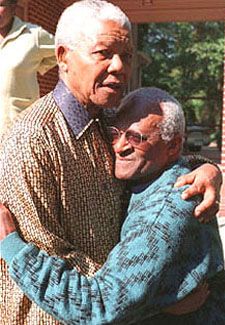
More than two decades after his passing, Nelson Mandela remains one of the most quoted, studied, and celebrated figures in global history. But beyond the medals and memorials, there was a man—a father, a lawyer, a prisoner—who carried the weight of a nation’s pain and still chose to heal. He faced isolation, betrayal, and unimaginable loss. Yet he never stopped believing in the dream he saw so clearly: a world where justice was not a privilege, but a promise.
Mandela’s journey was not smooth. It was marked by sacrifice, silence, and slow progress. But each moment—whether locked in a cell or standing before a cheering crowd—was a testament to his unshakable vision. He didn’t seek revenge; he sought reconciliation. He didn’t chase power; he chased peace. And in that pursuit, he became immortal.
“Before the age of hashtags, revolutions were handwritten. In silence, behind steel bars, history was etched into stone hearts.”
Today, Nelson Mandela is more than a historical figure. He is a mirror. His life forces us to ask: Are we building nations, or just managing them? Are we choosing unity, or comfort? Are we confronting injustice, or coexisting with it?
His legacy is not just in textbooks—it’s in constitutions, classrooms, and conversations. It’s in every child who dares to dream, every leader who chooses humility, and every citizen who refuses to forget. Nelson Mandela gave us more than speeches; he gave us a blueprint. And that blueprint still guides us.
In a world where division often feels louder than unity, Nelson Mandela reminds us that change begins with courage. That one voice, rooted in dignity, can reshape nations. That forgiveness, when armed with justice, becomes the most powerful force on earth.
Nelson Mandela didn’t just endure history—he transformed it. And as we walk through the pages of his life, we don’t just remember a man. We remember a mission. A mission that demands we listen, lead, and love—not just for ourselves, but for those still waiting to be free.
Table of Contents
🗓️“I Am Prepared to Die”
📍 Location: Pretoria Supreme Court, South Africa
📅 Date: April 20, 1964
🎯 Motive: Defending his actions during the Rivonia Trial and explaining the moral foundation of the anti-apartheid struggle
👥 Crowd: Delivered from the dock to the courtroom, with global media coverage and later broadcast to millions worldwide
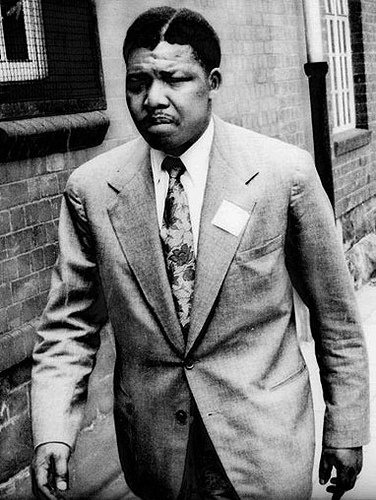
🔊 Context & Impact
Nelson Mandela delivered this speech during the Rivonia Trial, where he and other ANC leaders were charged with sabotage against the apartheid regime. Facing a possible death sentence, Mandela used the courtroom not to plead for mercy, but to articulate the ideals he was willing to die for.
He spoke for nearly three hours, calmly and powerfully laying out the injustices of apartheid, the necessity of resistance, and his vision for a democratic South Africa. The speech concluded with the immortal line:
“It is an ideal for which I am prepared to die.”
This moment transformed Mandela from a local revolutionary into a global symbol of moral courage. Though the courtroom was small, the impact was seismic—echoing across continents and generations.
🕊️ 1918: The Birth of Nelson Mandela — A Seed of Change in Mvezo
“Before the world knew his name, Nelson Mandela was born into silence, struggle, and strength.”
In the rural village of Mvezo, South Africa, the year 1918 marked the beginning of a life that would one day reshape the moral compass of the world. On July 18, Nelson Mandela was born into the Thembu royal family, a lineage of leadership and tradition. Though his roots were noble, Nelson Mandela’s journey would be anything but privileged. His birth was quiet, but his legacy would roar.
Nelson Mandela’s early life was shaped by the rhythms of tribal life, the wisdom of elders, and the harsh realities of a racially divided nation. His father, Gadla Henry Mphakanyiswa, was a respected chief and counselor, known for his integrity and defiance against colonial rule. From him, Nelson Mandela inherited not just a name, but a spirit—unyielding, principled, and proud.
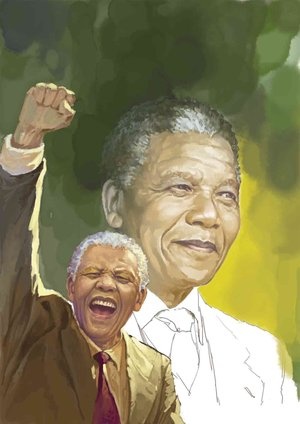
The name given to Nelson Mandela at birth was Rolihlahla, a Xhosa word meaning “pulling the branch of a tree”—often interpreted as “troublemaker.” It was a name that foreshadowed the role Nelson Mandela would play in challenging the roots of injustice. Even as a child, Nelson Mandela was surrounded by stories of resistance, dignity, and the importance of standing firm in the face of oppression.
In 1918, South Africa was emerging from the shadows of World War I, but for its Black citizens, the war had changed little. The 1913 Land Act had already stripped millions of their rights to own land, and segregation was tightening its grip. Nelson Mandela was born into a society where skin color determined destiny, and where freedom was a distant dream.
Yet, in the heart of Mvezo, Nelson Mandela’s upbringing was rich in values. He learned to herd cattle, listen to tribal lore, and respect the wisdom of his ancestors. These lessons were not academic—they were foundational. Nelson Mandela’s understanding of justice, leadership, and community began not in classrooms, but in conversations around fires and under open skies.
When Nelson Mandela was nine years old, his father passed away. This loss was a turning point. Nelson Mandela was sent to live in Qunu, and later in Mqhekezweni, under the guardianship of Chief Jongintaba Dalindyebo. It was here that Nelson Mandela was exposed to the inner workings of leadership and governance. He watched as disputes were settled through dialogue, not violence. He saw that true leadership was rooted in service, not status.
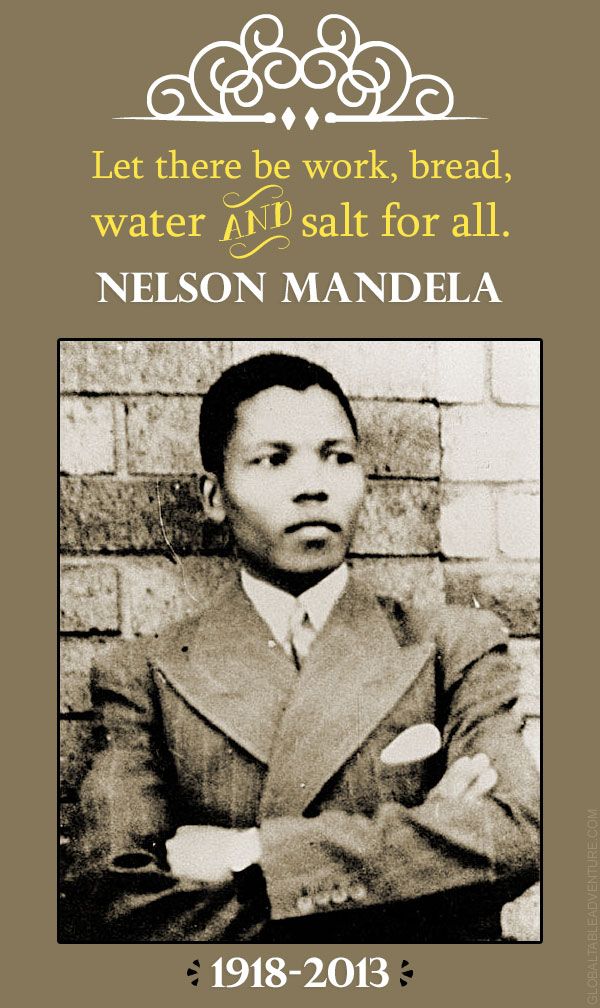
Nelson Mandela’s early exposure to tribal law and traditional leadership planted the seeds of his future philosophy. He began to understand that justice must be inclusive, that dignity must be defended, and that silence in the face of injustice is complicity. These ideas would later become the pillars of Nelson Mandela’s legacy.
The year 1918 was not just the beginning of Nelson Mandela’s life—it was the beginning of a story that would span nearly a century and touch every continent. Nelson Mandela’s birth was not marked by prophecy or celebration, but by quiet strength. It was the start of a life that would challenge empires, inspire movements, and redefine the meaning of freedom.
Nelson Mandela’s journey from Mvezo to the presidency of South Africa was long, painful, and extraordinary. But it all began in that small village, in a thatched hut, surrounded by the love of a community and the weight of a nation’s struggle. Nelson Mandela didn’t inherit power—he earned it. He didn’t seek fame—he sought fairness.
Today, when we speak of Nelson Mandela, we often begin with his imprisonment, his presidency, or his Nobel Peace Prize. But the true beginning lies in 1918—in the soil of Mvezo, in the values of the Thembu people, and in the quiet resilience of a boy named Rolihlahla. Nelson Mandela’s birth was the first step in a journey that would teach the world that courage is not the absence of fear—it is the decision to rise anyway.
“Some are born into greatness. Nelson Mandela was born into struggle—and chose greatness anyway.”
Nelson Mandela’s birth reminds us that even the smallest beginnings can lead to the greatest transformations. His life teaches us that leadership is not about titles—it’s about truth. That freedom is not given—it is earned. And that justice, when pursued with love, becomes the most powerful force on earth.
In remembering 1918, we remember the moment the world gained Nelson Mandela—a man who would become a mirror for humanity, a voice for the voiceless, and a legacy that still breathes.
📚 1939: Nelson Mandela at Fort Hare — The First Stand at Age 21
“At just 21, Nelson Mandela didn’t wait for permission to challenge injustice—he simply stood up.”
In 1939, at the age of 21, Nelson Mandela stepped into the gates of the University of Fort Hare, one of the few institutions in South Africa that offered higher education to Black students. For Nelson Mandela, this wasn’t just a college—it was a crucible. A place where ideas collided, identities awakened, and resistance quietly took root.
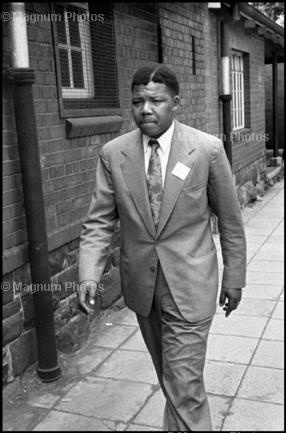
Nelson Mandela arrived at Fort Hare with the weight of expectation. As a member of the Thembu royal family, he was expected to study, succeed, and return to serve his people. But Nelson Mandela was already beginning to question the world around him. He observed the subtle hierarchies, the quiet silencing of student voices, and the growing tension between tradition and transformation.
At Fort Hare, Nelson Mandela was exposed to a new world of thought—African nationalism, anti-colonial literature, and the early stirrings of political consciousness. He listened, learned, and slowly began to speak. When the university administration imposed unfair restrictions on student elections, Nelson Mandela joined a protest demanding transparency and democratic representation.
It was a bold move for a 21-year-old. The protest was peaceful, but the consequences were severe. Nelson Mandela refused to back down, even when pressured by elders and university officials. His stance was clear: leadership must be earned, not handed down. Justice must be practiced, not preached.
For his role in the protest, Nelson Mandela was expelled from Fort Hare. It was a moment of deep disappointment, especially for his guardian, Chief Jongintaba, who had envisioned a smooth academic path for him. But for Nelson Mandela, this was not failure—it was formation. He had taken his first public stand against injustice, and it would not be his last.
This act of defiance revealed the essence of Nelson Mandela’s character. He was willing to sacrifice comfort for principle, reputation for integrity, and approval for accountability. At just 21, Nelson Mandela had shown that courage doesn’t wait for age—it arrives with conviction.
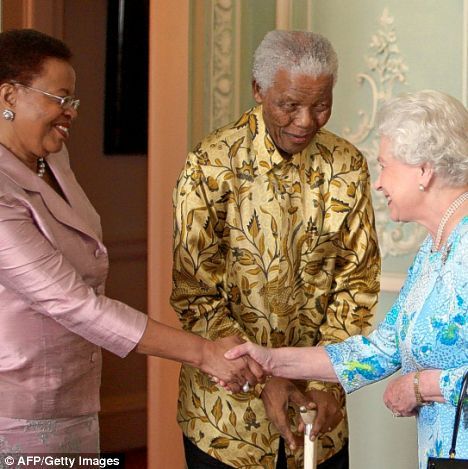
Years later, Nelson Mandela would reflect on Fort Hare not as a setback, but as a beginning. It was here that he learned the power of peaceful protest, the importance of student voice, and the necessity of challenging unjust systems. Fort Hare didn’t just educate Nelson Mandela—it awakened him.
“Nelson Mandela didn’t leave Fort Hare with a degree. He left with direction.”
In 1939, Nelson Mandela made a choice that would echo through history. He chose to resist when silence was safer. He chose to lead when obedience was expected. And in doing so, he began the journey that would one day carry him from a university campus to the presidency of a nation.
✊ 1942: Nelson Mandela at 24 — The Quiet Spark That Lit a Nation
“He didn’t walk into the ANC with a roar. He entered with questions, conviction, and the quiet fire of a man who had seen too much silence.”
In the year 1942, the world was at war. But in South Africa, a different kind of battle was brewing—one not fought with guns, but with laws, silence, and skin. At just 24 years old, Nelson Mandela stepped into this storm—not as a leader, not yet as a legend, but as a young man searching for a way to make injustice tremble.
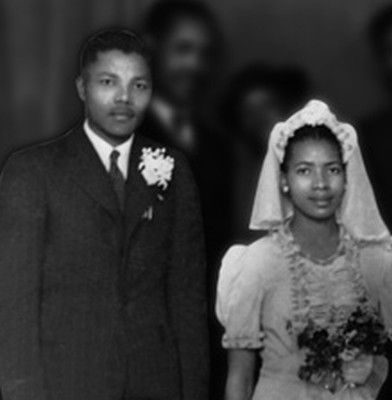
Nelson Mandela had recently arrived in Johannesburg, a city pulsing with contradictions. Skyscrapers rose beside shantytowns. Opportunity lived next door to oppression. Mandela worked as a law clerk by day and studied at night, absorbing not just legal theory but the lived reality of apartheid. He saw Black men denied entry to buildings they helped construct. He saw women arrested for walking without a pass. He saw dignity treated like a crime.
And he could not unsee it.
That year, Nelson Mandela began attending meetings of the African National Congress (ANC). It wasn’t a dramatic entrance. No spotlight. No speech. Just a young man sitting in the back, listening. Watching. Learning. The ANC was already decades old, founded in 1912 to fight for the rights of Black South Africans. But in 1942, it was evolving—growing younger, bolder, more urgent. And Nelson Mandela was ready.
He didn’t speak much at first. He absorbed the voices of giants—Walter Sisulu, Oliver Tambo, and others who would become his lifelong comrades. He learned that resistance wasn’t just about rage—it was about rhythm. Strategy. Patience. He saw that change didn’t come from shouting alone—it came from organizing, educating, and enduring.
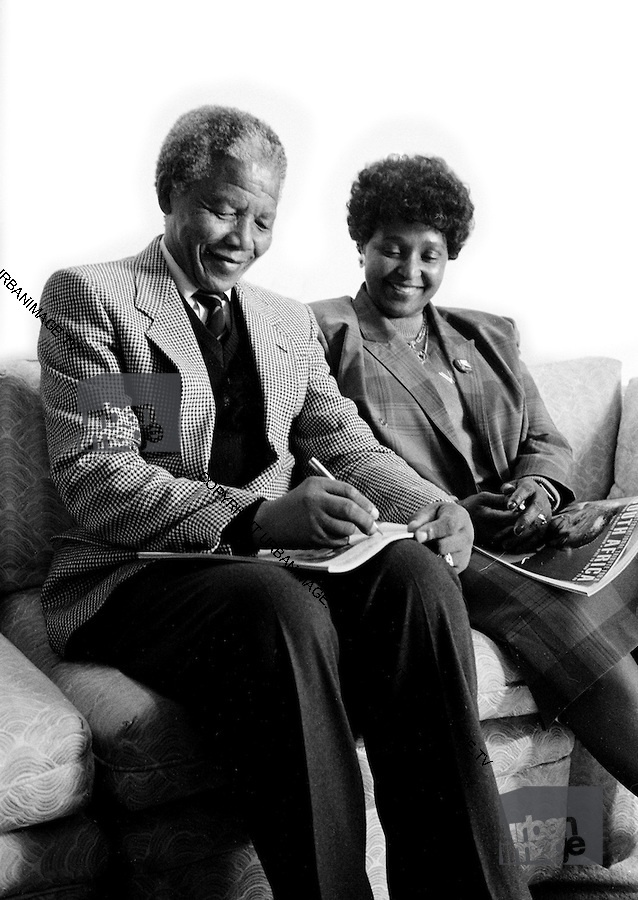
Nelson Mandela’s early involvement in the ANC was quiet but committed. He helped plan meetings, distribute pamphlets, and build trust in communities that had learned to fear politics. He didn’t yet lead marches—but he walked beside those who did. He didn’t yet write manifestos—but he read every word. And slowly, the fire inside him began to burn brighter.
“In 1942, Nelson Mandela didn’t join the ANC to be seen. He joined to see differently.”
This was the year Nelson Mandela stopped being a witness and became a participant. He realized that apartheid wasn’t just a system—it was a sickness. And the cure would require more than law books. It would require courage, community, and a refusal to be comfortable.
At 24, Nelson Mandela chose discomfort. He chose purpose. He chose the ANC—not as a platform for fame, but as a forge for freedom.
Looking back, 1942 wasn’t the year Nelson Mandela changed the world. It was the year he changed himself. And that change would ripple outward—through prison walls, presidential halls, and the hearts of millions.
🔥 1944: Nelson Mandela at 26 — The Youth League That Redefined Resistance
“He didn’t just join a movement—Nelson Mandela helped rewire its soul.”
In the spring of 1944, a 26-year-old Nelson Mandela stood in a modest house in Orlando, Soweto, surrounded by a handful of young visionaries. The air was thick with frustration—frustration at the slow pace of change, at the polite petitions that apartheid ignored, and at the cautious tone of the African National Congress (ANC). That night, history shifted. Nelson Mandela, alongside Anton Lembede, Walter Sisulu, Oliver Tambo, and others, co-founded the ANC Youth League.
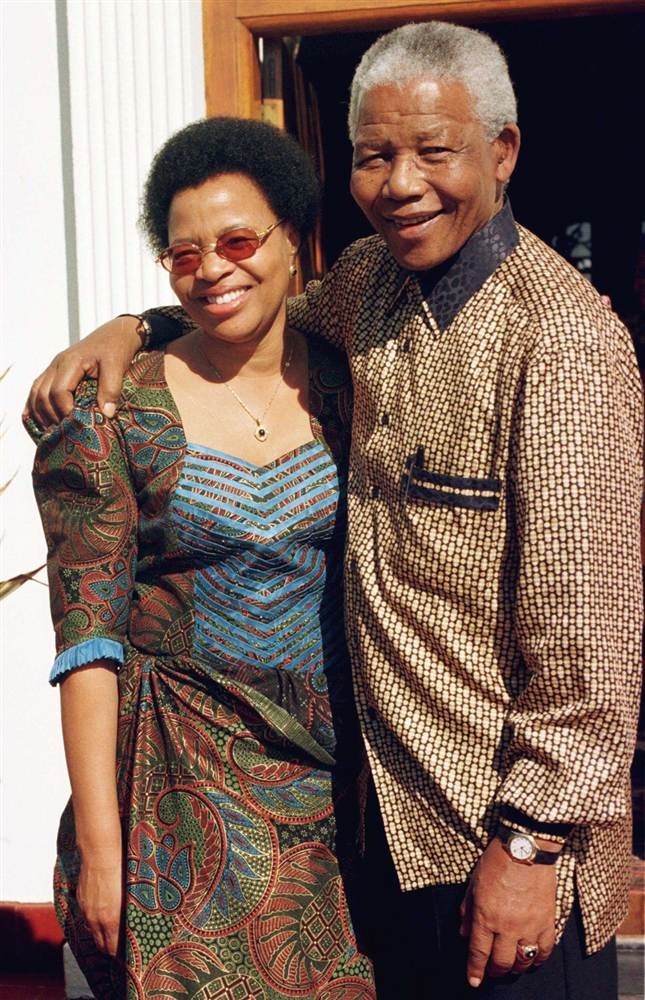
This wasn’t just a new wing of the ANC—it was a new heartbeat. The Youth League was born out of urgency. Nelson Mandela and his peers believed that the ANC’s traditional methods—delegations, appeals, and resolutions—were no longer enough. The time had come for mass mobilization, grassroots activism, and radical energy. They wanted to awaken the sleeping giant of African youth and channel its power into organized resistance.
Nelson Mandela didn’t arrive at this moment by accident. Since joining the ANC in 1942, he had been quietly absorbing its structure, its strengths, and its limitations. He admired its legacy but questioned its strategy. By 1944, he was ready to help reshape it. The Youth League’s founding manifesto, heavily influenced by Anton Lembede’s fiery intellect, called for African nationalism, self-reliance, and direct action. It rejected passivity and demanded pride.
For Nelson Mandela, this was a turning point—not just politically, but personally. He was no longer a quiet observer in the back of ANC meetings. He was now a co-architect of its future. The Youth League gave him a platform to speak, organize, and inspire. It was here that Nelson Mandela began to hone the leadership style that would later define his presidency: bold but thoughtful, defiant but disciplined.
The Youth League also marked the beginning of Nelson Mandela’s lifelong partnership with Walter Sisulu, who had introduced him to the ANC and now stood beside him as a mentor and comrade. Their bond would become one of the most powerful alliances in South African history.
“In 1944, Nelson Mandela didn’t just raise his voice—he raised a generation.”
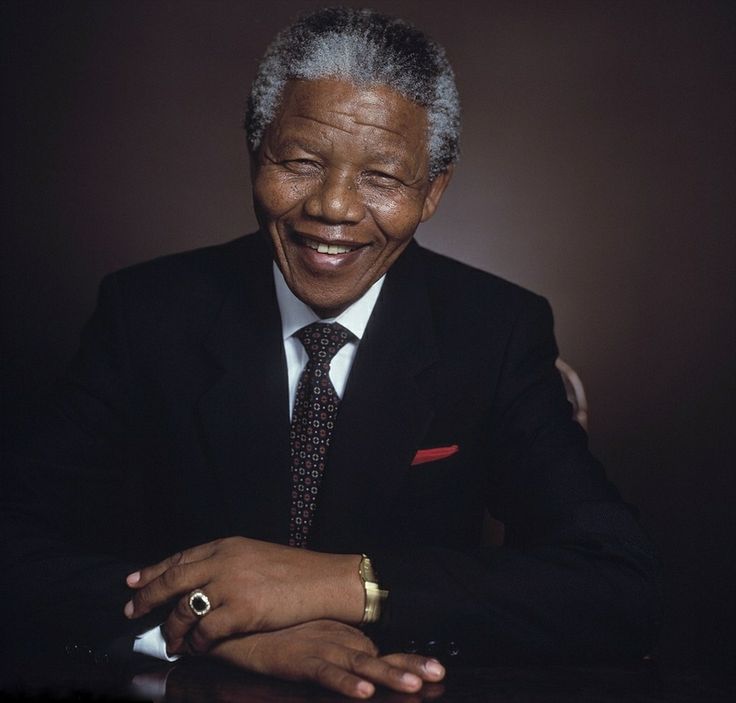
The founding of the ANC Youth League was more than a political event—it was a cultural shift. It injected urgency into the liberation movement and laid the groundwork for future campaigns like the Defiance Campaign and the Freedom Charter. It also signaled to the apartheid regime that the youth of South Africa would not wait quietly for freedom.
Nelson Mandela’s role in 1944 was not about ego—it was about evolution. He helped turn frustration into focus, and idealism into action. At just 26, he had already begun to redefine what it meant to fight—not with rage, but with resolve.
References:
Wikipedia – ANC Youth League
South African History Online – ANCYL
✊ 1952: Age 34 — The Year Defiance Became a Duty
“He didn’t raise a fist. He raised a nation.”
In the charged atmosphere of 1952, South Africa was suffocating under apartheid’s grip. Laws dictated where people could walk, live, work, and even breathe. At just 34 years old, a young lawyer from Johannesburg stepped forward—not with rage, but with resolve. That year, he helped ignite the Defiance Campaign, a movement that would awaken the conscience of a country and mark the beginning of mass resistance.
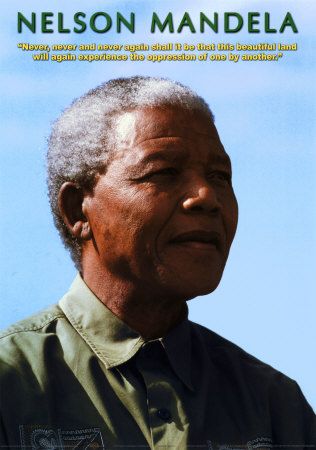
The campaign wasn’t spontaneous—it was strategic. Under the leadership of the African National Congress and in alliance with the South African Indian Congress, thousands of volunteers deliberately broke unjust laws. They entered “whites-only” zones, refused to carry passbooks, and defied curfews. They didn’t fight with fists—they fought with presence. With courage. With conviction.
At the heart of this movement was a man who had spent years studying the law, only to realize that the law itself had become a weapon. He knew that change wouldn’t come from courtrooms alone. It had to come from the streets. From the people. From the fire that injustice had lit in their bones.
He was appointed National Volunteer-in-Chief, a title that meant more than leadership—it meant responsibility. He traveled across provinces, organized rallies, trained activists, and gave speeches that stirred hearts and unsettled power. His voice wasn’t loud—but it was clear. And it carried.
By the end of the year, over 8,000 people had been arrested. The government responded with force. On December 5, 1952, he and 19 others were convicted under the Suppression of Communism Act, accused of promoting disorder. Though the campaign was peaceful, the regime labeled it dangerous. He was sentenced to nine months of hard labor, suspended for two years.
But the sentence didn’t silence him. It sharpened him.
This was the moment he truly stepped into the role history had been preparing him for. He had moved from theory to action, from law books to legacy. He had seen what unity could do—how it could turn ordinary citizens into symbols of resistance.
The Defiance Campaign didn’t end apartheid. But it ended the illusion that people would accept it quietly. It proved that courage could be contagious. That dignity, once awakened, doesn’t go back to sleep.
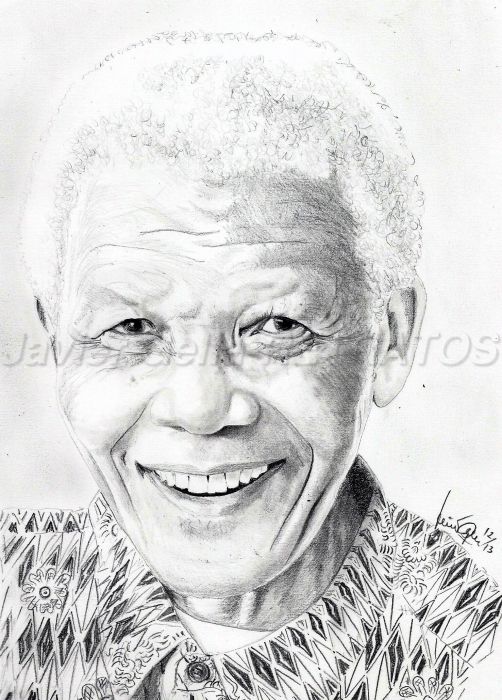
“At 34, he didn’t just defy the law—he defied the idea that justice could wait.”
1952 was not just a year of protest—it was a year of transformation. A man who had once walked cautiously through the corridors of power now stood boldly in the streets. And in doing so, he gave others permission to stand too.
⚖️ 1956: Age 38 — The Treason Trial That Tried a Movement
“They didn’t just arrest men. They tried to arrest a dream.”
On the morning of December 5, 1956, South Africa woke to silence—and sirens. In a coordinated sweep across the country, 156 activists were arrested and charged with high treason. Among them was a 38-year-old lawyer who had already become a symbol of defiance. The government wasn’t just targeting individuals—it was targeting the heartbeat of the liberation movement.
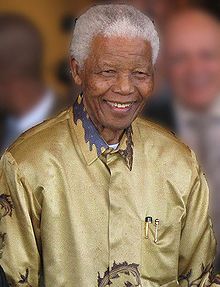
The arrests were part of a calculated attempt to dismantle the Congress Alliance, a coalition of anti-apartheid organizations that had united behind the Freedom Charter, a document calling for democracy, equality, and human rights. The regime saw this unity as a threat—and responded with fear disguised as law.
The accused were a mosaic of South Africa’s resistance: Black, Indian, white, and Coloured leaders, trade unionists, teachers, and students. They were held in Johannesburg’s Fort prison, interrogated, and accused of plotting to overthrow the state. The charge? Treason. The punishment, if convicted? Death.
But the trial didn’t go as planned.
What was meant to be a swift show of force became a five-year legal marathon. The state struggled to prove that peaceful protest and political organizing amounted to violent conspiracy. The courtroom became a stage—not for fear, but for courage. The accused used the trial to expose apartheid’s brutality, defend their ideals, and build solidarity.
During this time, the man at the center of it all continued his work. He studied, strategized, and supported fellow activists. The trial didn’t break him—it refined him. It taught him that justice must be fought for not just in the streets, but in the courts. That dignity must be defended even when shackled.
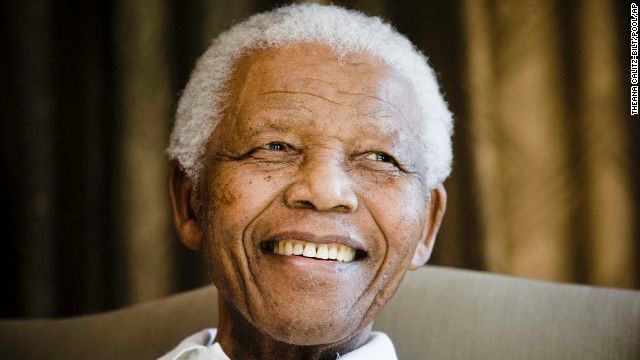
“He didn’t stand alone in the dock. He stood with a nation.”
In March 1961, after years of hearings, cross-examinations, and delays, the final 28 accused—including the man who had become the face of resistance—were acquitted. The verdict was a blow to the regime. It proved that truth, even under siege, could still stand.
The Treason Trial didn’t end apartheid. But it revealed its desperation. It showed that the government feared ideas more than weapons. That unity was more dangerous than rebellion. And that the movement, though bruised, was unbroken.
For the man who stood trial at 38, it was a chapter of endurance. A test of patience. A lesson in resilience. And a reminder that even when justice is delayed, it must never be denied.
⚔️ 1961: Age 43 — When Silence Was No Longer an Option
“He had preached peace for years. But in 1961, he picked up the spear—not to destroy, but to defend.”
By the dawn of the 1960s, South Africa was a nation on fire. The apartheid regime had grown more brutal, more shameless. Peaceful protests were met with bullets. Petitions were ignored. Leaders were banned, jailed, or worse. And in the shadow of the Sharpeville Massacre of 1960—where 69 unarmed protesters were gunned down—something inside the resistance movement broke.
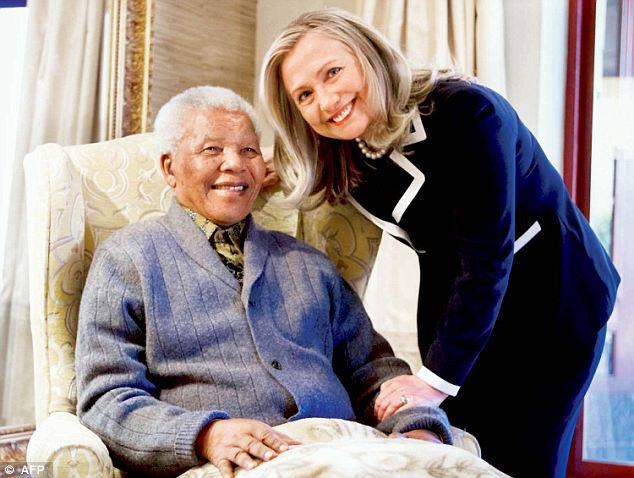
For nearly two decades, the African National Congress (ANC) had championed nonviolent resistance. But by 1961, many within the movement, including its most visible leader, had reached a painful conclusion: peaceful protest alone was no longer enough.
At 43 years old, the man who had once studied law to uphold justice now found himself helping to build a new kind of organization—one that would challenge injustice with sabotage, not silence. On December 16, 1961, a date chosen with symbolic precision, Umkhonto we Sizwe (“Spear of the Nation”) was born.
The date was no accident. December 16 marked the anniversary of the Battle of Blood River, a day celebrated by the apartheid regime as a symbol of white victory. By launching the armed struggle on that day, the message was clear: the oppressed would no longer accept their chains quietly.
The formation of Umkhonto we Sizwe (MK) was not a declaration of war—it was a declaration of refusal. Refusal to be slaughtered in the streets. Refusal to be silenced by laws designed to erase dignity. Refusal to wait for freedom that never came.
The new organization operated independently of the ANC, though it was deeply aligned with its goals. Its mission was to carry out sabotage against government infrastructure—railways, power stations, communication lines—not to harm civilians, but to disrupt the machinery of apartheid. It was a strategy of pressure, not terror.
The man behind this shift didn’t take the decision lightly. He had spent years preaching nonviolence. But after Sharpeville, after the banning of the ANC, after watching peaceful protesters jailed and beaten, he knew the movement had to evolve—or die.
He went underground, adopting the alias “David Motsamayi.” He traveled across Africa and even to London, seeking support, training, and solidarity. He met with leaders of newly independent African nations, studied guerrilla warfare, and returned with a plan—not to destroy South Africa, but to save it from itself.
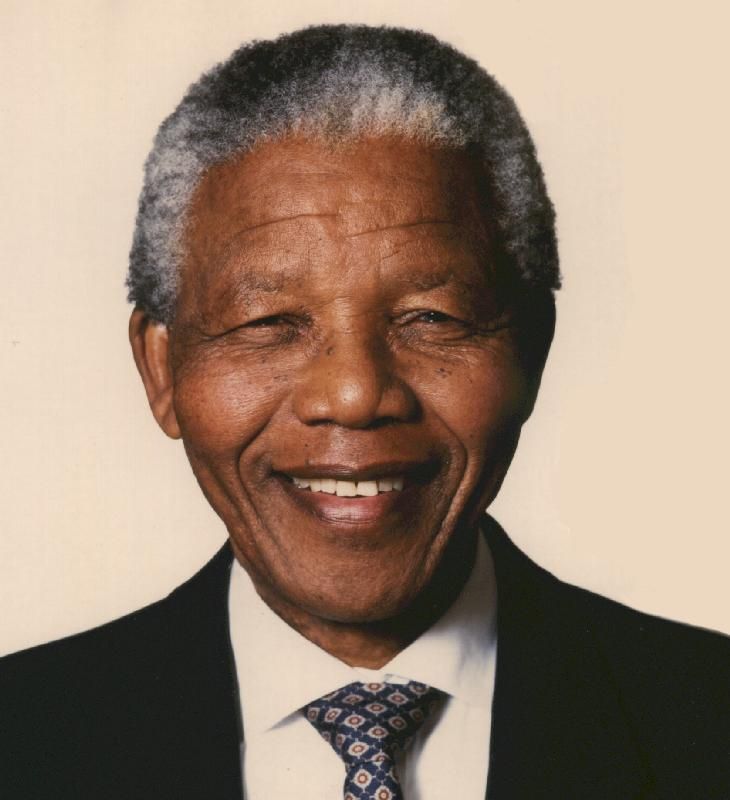
“He didn’t abandon peace. He redefined it.”
The first acts of sabotage began in December 1961. Leaflets were distributed across the country, explaining why the movement had changed course. The message was clear: “We are fighting for freedom. We are not terrorists. We are patriots.”
The government, however, responded with predictable fury. The state intensified its crackdown. Surveillance increased. Arrests followed. But the spark had been lit. The resistance had entered a new phase—one that would eventually lead to Rivonia, to Robben Island, and to the presidency.
Looking back, 1961 was not a year of rage—it was a year of reckoning. A year when a man who had once believed in the power of the law realized that the law had become a weapon. A year when he chose to fight—not out of hate, but out of love for a country that refused to love him back.
“He didn’t choose violence. He chose to be heard.”
The formation of Umkhonto we Sizwe was a turning point in South Africa’s liberation struggle. It marked the end of innocence and the beginning of a long, painful road to freedom. But it also marked the moment when the oppressed stopped asking—and started demanding.
And at the center of it all stood a 43-year-old man who had once believed that justice could be negotiated. In 1961, he stopped negotiating with injustice—and started dismantling it.
References:
- South African History Online – Umkhonto we Sizwe (MK)
- Wikipedia – Umkhonto we Sizwe
- Britannica – Umkhonto we Sizwe
🚔 1962: Age 44 — The Arrest That Tried to Bury a Voice
“He crossed borders to build bridges. They built walls to keep him in.”
By mid-1962, the man who had once walked freely through the streets of Johannesburg was now South Africa’s most wanted fugitive. For nearly 17 months, he had lived underground—changing disguises, using aliases, and moving from safe house to safe house. The press had dubbed him the “Black Pimpernel.” The government called him dangerous. But to the people, he was becoming something more: a symbol of resistance.
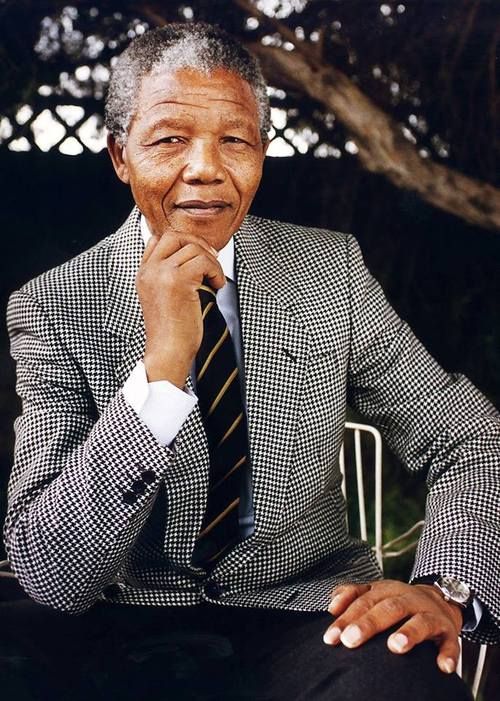
Earlier that year, he had left the country illegally to meet leaders across Africa and Europe. He traveled to Ethiopia, Ghana, Algeria, and London—seeking support, training, and solidarity for the growing liberation movement. He studied guerrilla tactics, met with heads of state, and spoke of a future where South Africa would belong to all who lived in it.
But on August 5, 1962, near Howick in Natal Province, his journey was interrupted. A police roadblock stopped the car he was traveling in. He was arrested on the spot. The disguise, the alias, the underground network—it all collapsed in a moment. The man who had evaded capture for over a year was now in chains.
At 44 years old, he was charged with inciting workers to strike and leaving the country without a passport. These charges were tactical. The government knew they couldn’t yet prove sabotage or conspiracy, but they wanted him off the streets. They wanted to silence the voice that had grown too loud.
The trial began in Pretoria. It was swift, calculated, and designed to send a message. On November 7, 1962, he was sentenced to five years in prison. But even in court, he refused to be broken. He stood tall, spoke clearly, and reminded the world that laws without justice are merely tools of oppression.
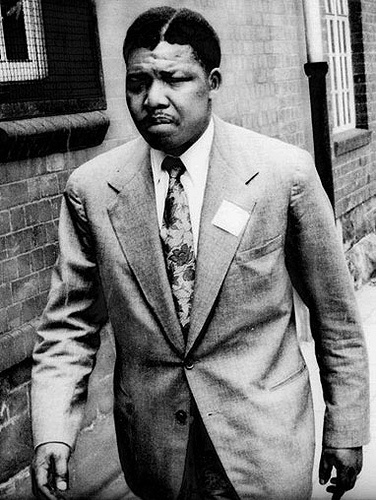
“They sentenced him to silence. But silence became his loudest speech.”
He was sent to Pretoria Local Prison. The walls were cold, the routines rigid. But inside, he remained focused. He read, wrote, and prepared. He knew this was only the beginning. The regime wanted to isolate him—but they had only amplified him.
What made 1962 so pivotal wasn’t just the arrest—it was the shift. The man who had once believed in peaceful protest had now embraced armed resistance. He had helped form Umkhonto we Sizwe the year before. He had trained for a struggle that would no longer ask politely. And now, he was paying the price.
But he never begged. Never bargained. Never backed down.
The arrest in 1962 was meant to be a victory for the apartheid regime. Instead, it became a turning point. It marked the beginning of a prison sentence that would last far longer than five years. It would stretch into decades. But it would also stretch into history.
Because the man they tried to bury in concrete and steel would one day walk free—and walk into the presidency.
References:
- Nelson Mandela Foundation – Trials and Prisons Chronology
- Chatham House – The Arrest of Nelson Mandela
- Aswica – Mandela’s 1962 Prison Sentence
⚖️ 1964: Age 46 — The Sentence That Set a People Free
“They tried to bury him in silence. Instead, they planted a seed that would grow into freedom.”
By the time the verdict was delivered on June 12, 1964, the courtroom in Pretoria had become more than a legal arena—it was a stage where history was being written in real time. The man standing in the dock was not pleading for mercy. He was not asking for leniency. He was delivering a message to the world.
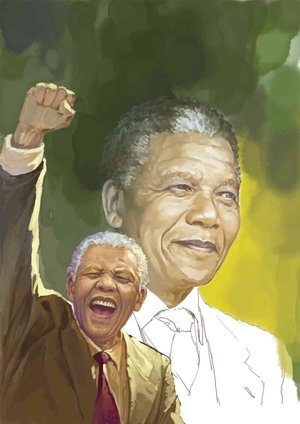
The Rivonia Trial, named after the Johannesburg suburb where key resistance leaders were arrested at Liliesleaf Farm, had begun in October 1963. The charges were grave: sabotage, conspiracy, and plotting to violently overthrow the government. The state sought the death penalty. The accused—ten men, including activists, lawyers, and intellectuals—stood accused of trying to dismantle apartheid by force.
Among them was a 46-year-old who had already spent two years in prison. He had helped form Umkhonto we Sizwe, the armed wing of the liberation movement, after peaceful protests were met with bullets. He had traveled across Africa, seeking support and training. He had returned to lead—not with hatred, but with strategy.
The trial was brutal. The prosecution presented documents, testimonies, and surveillance. But the defense turned the tables. They didn’t deny the charges. They explained them. They exposed the cruelty of apartheid, the impossibility of peaceful reform, and the moral necessity of resistance.
Then came the moment that would echo through time.
On April 20, 1964, the man in the dock delivered a speech that would become one of the most powerful political statements of the 20th century. He spoke for nearly four hours, ending with words that would be etched into the conscience of the world:
“I have cherished the ideal of a democratic and free society… It is an ideal for which I am prepared to die.”
He wasn’t just defending himself—he was defending the right to dream.
On June 12, Judge Quartus de Wet delivered the sentence: life imprisonment. The courtroom fell silent. The regime had hoped to crush the movement by locking away its leaders. But what they didn’t realize was that they had just elevated them into symbols.
The man was sent to Robben Island, a windswept prison off the coast of Cape Town. There, he would spend the next 18 years breaking rocks by day and building hope by night. The sentence was meant to erase him. Instead, it immortalized him.
“They locked the cell. But they couldn’t lock the idea.”
The Rivonia Trial was a turning point—not just in one man’s life, but in the life of a nation. It revealed the desperation of a regime that feared ideas more than weapons. It showed the world that justice and legality are not always the same. And it proved that even in chains, a voice can remain free.
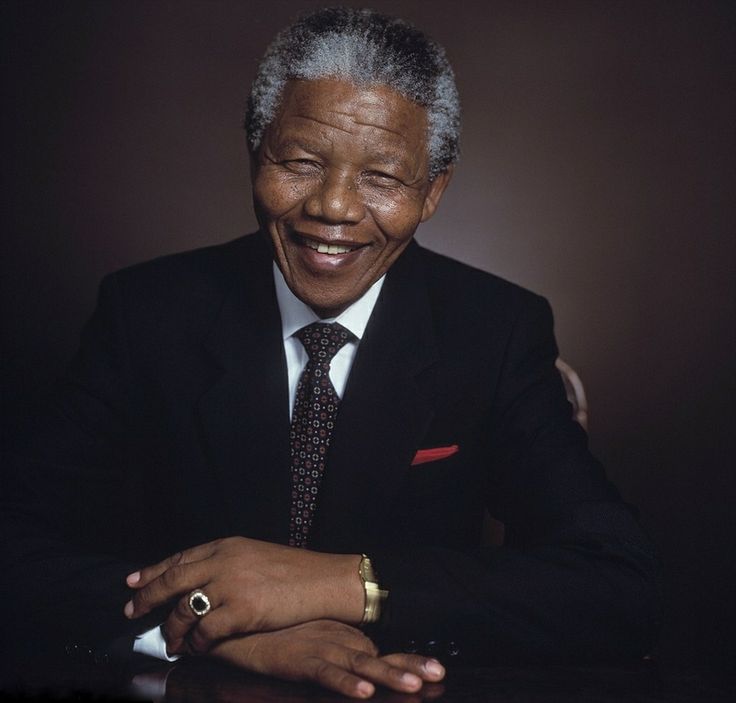
At 46, he walked into prison not knowing if he’d ever walk out. But he carried with him something stronger than fear—conviction. And that conviction would one day carry a country from darkness into dawn.
References:
- Nelson Mandela Foundation – Sentencing of the Rivonia Trialists
- South African History Online – Rivonia Trial 1963–1964
- Wikipedia – Rivonia Trial
🕯️ 1964–1982: The Island That Tried to Silence a Revolution
“They gave him a number. He gave them a legacy.”
On June 13, 1964, the day after being sentenced to life imprisonment in the Rivonia Trial, a 46-year-old political prisoner was flown in secret to a barren island off the coast of Cape Town. The place was Robben Island, a former leper colony turned maximum-security prison. The man was assigned the number 466/64—the 466th prisoner of that year. But he was no ordinary inmate. He was a symbol of a nation’s hope, now locked behind bars.
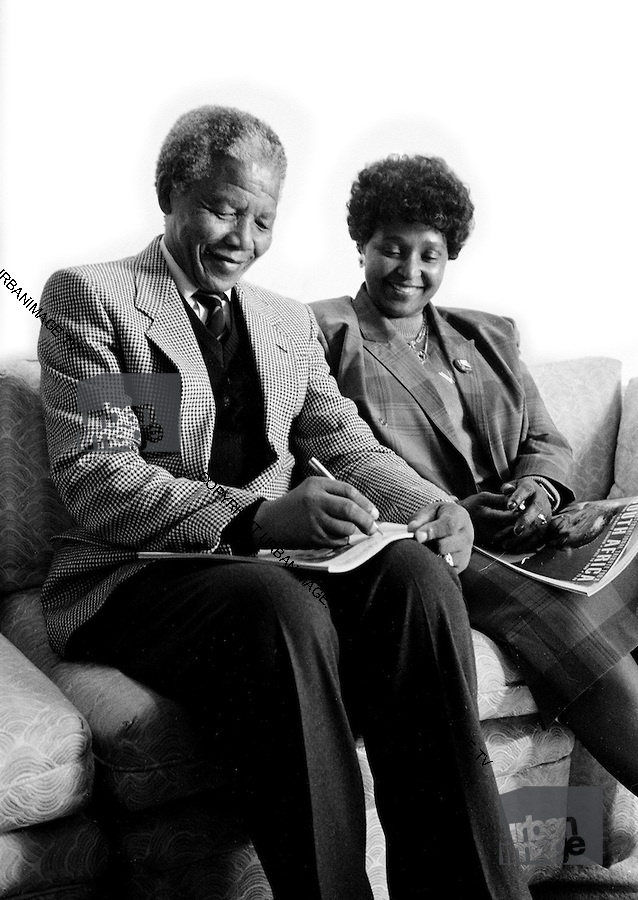
The regime believed that isolation would erase him. That time would make the world forget. But what they didn’t understand was that this island, meant to crush the spirit, would instead become a crucible of leadership.
Life Behind the Walls
The conditions were brutal. Prisoners were confined to small, damp cells with no plumbing and thin mats on concrete floors. The man who had once stood in courtrooms now spent his days breaking rocks in a limestone quarry, exposed to blinding sun that permanently damaged his eyesight. Letters were limited to one every six months. Visits were rare and heavily monitored.
Food was rationed by race. Black prisoners received smaller portions than others. Books were censored. Newspapers were banned. Even talking during labor was forbidden. But in this silence, something extraordinary happened.
“They imprisoned his body, not his mind.”
He and his fellow inmates turned the prison into a university. They debated politics, history, philosophy. They taught each other languages, law, and leadership. They called it the “Robben Island University.” The man at the center of it all became a teacher, a mentor, and a quiet strategist.
The Quarry and the Quiet Resistance
The limestone quarry was meant to humiliate. But it became a place of quiet defiance. Prisoners used their time there to organize, to bond, to build resilience. They carved out a cave in the quarry wall—an unofficial meeting room where they could speak freely, plan, and dream.
Despite the isolation, the man’s influence grew. New prisoners arrived and found in him a calm, disciplined presence. He insisted on dignity—wearing shorts in winter was a humiliation he fought against. He demanded the right to study, to read, to be treated as a human being. And slowly, through hunger strikes, petitions, and sheer persistence, small victories were won.
The World Begins to Listen
Outside the prison walls, the world was changing. The anti-apartheid movement was gaining momentum. International pressure mounted. His name, once whispered in fear, was now chanted in protests from London to Lusaka. “Free Mandela” became a global rallying cry.
But inside, he remained grounded. He refused special treatment. He turned down conditional offers of release that required him to renounce the struggle. He would not trade his principles for freedom.
“He chose a longer sentence over a shorter silence.”
By the early 1980s, his health was deteriorating. Years of hard labor and poor medical care had taken their toll. In 1982, at age 64, he was transferred to Pollsmoor Prison in Cape Town. The regime hoped to isolate him from the younger generation of activists arriving on Robben Island. But the damage was done—from their own prison, they had helped create a leader.
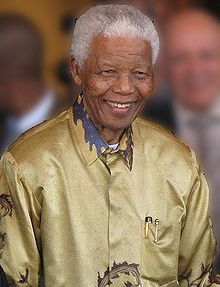
Robben Island didn’t break him. It built him.
Those 18 years were not lost—they were invested. In discipline. In strategy. In the quiet, patient preparation for a future he might never see. But he believed in it anyway.
“He entered as a revolutionary. He emerged as a statesman.”
🕯️ 1982–1988: The Years the Walls Started Listening
“They moved him to contain him. But the silence of stone became the sound of strategy.”
By March 1982, after 18 years of harsh confinement on Robben Island, the man who had become the face of South Africa’s resistance was quietly transferred to Pollsmoor Prison in Tokai, Cape Town. He was 64 years old, and the apartheid regime had a new plan—not to break him, but to isolate him from the younger generation of activists arriving on the island.
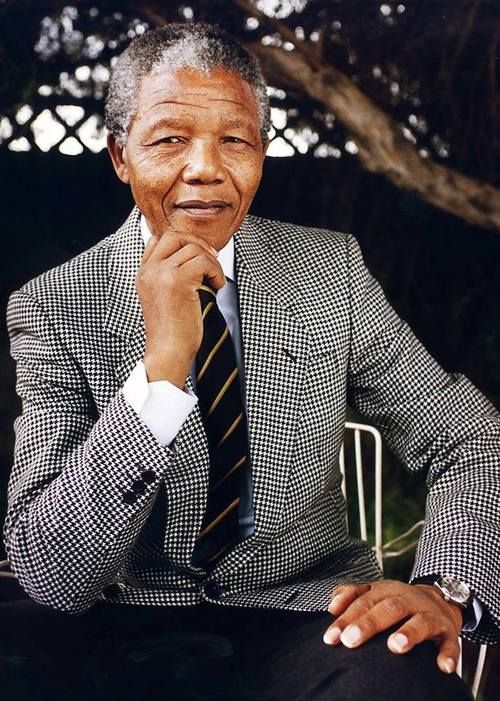
Pollsmoor was a maximum-security facility, but it was different. The cells were cleaner. The conditions less brutal. The authorities hoped that by separating him from his comrades, they could dilute his influence. But they underestimated the power of patience.
Inside Pollsmoor, he remained disciplined. He exercised regularly, read voraciously, and kept his mind sharp. He was allowed more frequent visits and began receiving books and newspapers. Slowly, the regime began to realize that they couldn’t erase him. So they tried something else: conversation.
“They didn’t open the gates. They opened the door to dialogue.”
In 1985, then-President P.W. Botha offered him conditional release—if he renounced violence. He refused. His reply was simple: “Only free men can negotiate.” He would not abandon the struggle for a seat at the table. He would not trade principle for comfort.
But behind the scenes, something was shifting. The government began secret talks with him. These were cautious, coded, and often indirect. But they marked the beginning of a new chapter—one where the prisoner was no longer just a symbol, but a strategist.
In 1988, at age 70, his health began to deteriorate. He was diagnosed with tuberculosis, a result of years spent in damp cells and dusty quarries. The regime, fearing global backlash if he died in custody, moved him again—this time to Victor Verster Prison, a low-security facility near Paarl.
Victor Verster was unlike any prison he had known. He lived in a private house on the grounds, with a garden, a cook, and access to visitors. It was still confinement—but with dignity. The regime hoped to soften his stance, to prepare him for a controlled release. But he used the time to prepare for something else: leadership.
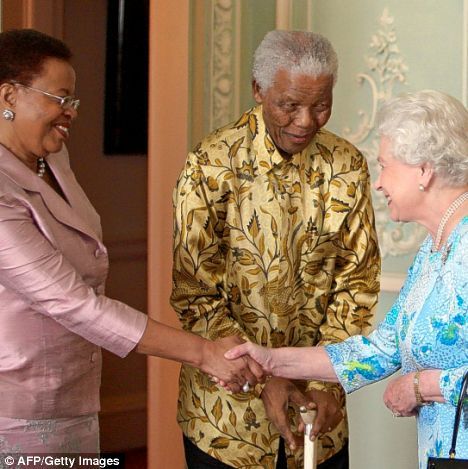
“He didn’t see a garden. He saw a runway.”
From Victor Verster, he continued secret negotiations. He met with government officials, business leaders, and international envoys. He studied economic policy, constitutional law, and transition models. He wasn’t just waiting—he was planning.
These six years—1982 to 1988—were not passive. They were pivotal. The man who had entered prison as a revolutionary was now emerging as a statesman. The regime had tried to silence him. Instead, they gave him space to think, to build, to become.
References:
- Nelson Mandela Foundation – Trials and Prisons Chronology
- Britannica – Mandela’s Incarceration
- Wikipedia – Drakenstein Correctional Centre (Victor Verster)
🕊️ 1990: Age 71 — The Day the Doors Opened
“He stepped out of prison not with vengeance—but with vision.”
The morning of February 11, 1990, was unlike any other in South African history. Millions watched their televisions, radios crackled with anticipation, and the streets of Cape Town swelled with emotion. After nearly three decades behind bars, the man who had become the soul of the anti-apartheid movement was about to walk free.
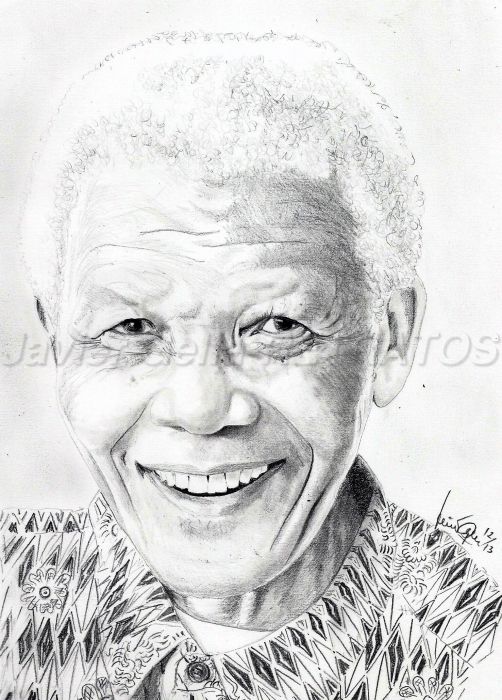
He was 71 years old, his hair now grey, his gait slower—but his presence, unshaken. The gates of Victor Verster Prison opened, and he emerged hand-in-hand with his wife, Winnie. The crowd erupted. The silence of 27 years was shattered by cheers, tears, and the thunder of history catching up.
But this wasn’t just a homecoming. It was a handover—from resistance to reconciliation.
The Road to Release
His release didn’t happen overnight. It was the result of years of secret negotiations between him and the apartheid government, beginning in the mid-1980s. The regime, under mounting international pressure and internal unrest, had realized that the future could not be built on exclusion.
In 1989, President F.W. de Klerk took office and began dismantling apartheid’s legal scaffolding. On February 2, 1990, he announced the unbanning of the African National Congress (ANC), the Pan Africanist Congress, and the South African Communist Party. Nine days later, the man who had been imprisoned for sabotage and conspiracy was released—without conditions.
“He didn’t ask for freedom. He earned it.”
The Speech That Shook the Nation
Hours after his release, he addressed a crowd of over 50,000 people at the Grand Parade in Cape Town. His voice was firm, his message clear: the struggle was not over. He called for continued resistance, but also for peace. He spoke not of revenge, but of rebuilding.
“I stand before you not as a prophet, but as a humble servant of you, the people.”
That speech marked the beginning of a new chapter—not just for him, but for South Africa.
The Negotiator Emerges
In the months that followed, he began formal negotiations with the apartheid government. These talks were delicate, tense, and historic. They involved multiple parties, including the ANC, the ruling National Party, and civil society groups. The goal: to dismantle apartheid and build a democratic South Africa.
He met with de Klerk, business leaders, and opposition figures. He listened, reasoned, and led. His approach was firm but flexible. He insisted on majority rule, but also on protecting minority rights. He understood that freedom without unity would be fragile.
“He didn’t just negotiate power. He negotiated peace.”
A Nation Begins to Shift
1990 was a year of transformation. Political prisoners were released. Exiled leaders returned. The ANC began operating legally. The streets, once filled with protest, now buzzed with possibility.
But it wasn’t easy. Violence flared in townships. Mistrust lingered. Extremists on both sides tried to derail the process. Yet through it all, he remained steady—reminding the nation that reconciliation was not weakness, but wisdom.
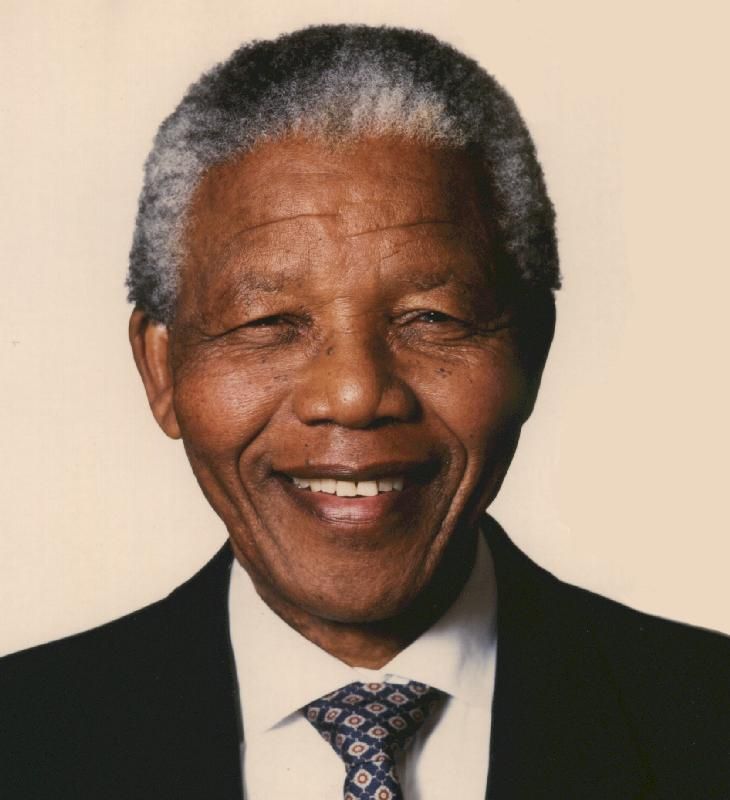
The Legacy of That Year
His release was more than symbolic. It was strategic. It allowed him to guide the transition from resistance to governance. It gave South Africa a chance to heal—not by forgetting the past, but by facing it together.
By the end of 1990, the foundations of apartheid were crumbling. The man who had once been labeled a terrorist was now being called a peacemaker. And the world watched as a country long divided began to imagine itself whole.
References:
- Wikipedia – Negotiations to End Apartheid
- World History Edu – Mandela’s Role
- SA History – ANC on the Road to Negotiations
🕊️ 1991: Age 72 — The Return of the People’s President
“He didn’t campaign for power. He was called to carry the weight of a nation’s hope.”
From July 2 to 7, 1991, more than 2,000 delegates gathered at the University of Durban–Westville for the 48th National Conference of the ANC—its first inside South Africa since being banned in 1960. The moment was historic. For the first time in over three decades, the movement that had been forced underground was now standing in the open, legal and unbroken.
At the heart of this gathering stood a man who had spent 27 years in prison, only to emerge with more clarity, more calm, and more conviction than ever before. At 72 years old, he was elected President of the ANC, unopposed. It was not a surprise. It was a recognition.
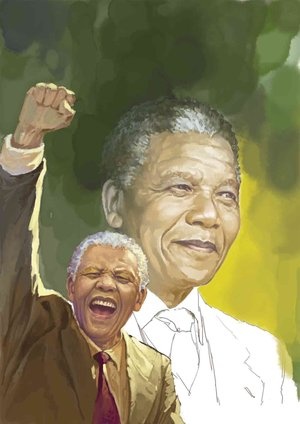
The outgoing president, Oliver Tambo, had led the ANC in exile for over two decades, keeping the flame alive through diplomacy, international solidarity, and unwavering belief. But after suffering a stroke in 1989, Tambo stepped aside, and the mantle passed to the man who had become the face of the struggle.
“He didn’t inherit a title. He inherited a mission.”
A Movement Reunited
The 1991 conference was more than a political event—it was a family reunion. Delegates came from every corner of the country and the world: from ANC branches, underground cells, exile missions, Umkhonto we Sizwe camps, and the Women’s and Youth Leagues. For many, it was their first time meeting face-to-face after years of separation.
The atmosphere was electric. Songs of freedom echoed through the halls. Old comrades embraced. New leaders emerged. And at the center of it all was a man who had once been prisoner 466/64, now guiding the movement into a new era.
From Protest to Policy
The ANC was no longer just a liberation movement—it was preparing to govern. The stakes were enormous. Talks with the apartheid government had begun, but the path to democracy was far from certain. Violence still plagued the townships. Trust was fragile. The future was unwritten.
As president, he had to balance many forces: the impatience of the youth, the caution of elders, the demands of international allies, and the resistance of a regime still clinging to power. He led with grace, listening more than he spoke, building consensus where others saw only conflict.
“He didn’t just lead meetings. He led minds.”
The Negotiator-in-Chief
Throughout 1991, he played a central role in the Convention for a Democratic South Africa (CODESA)—a multi-party negotiation process aimed at dismantling apartheid and drafting a new constitution. These talks were tense, often stalling, sometimes collapsing. But he remained steady.
He understood that democracy wasn’t just about elections—it was about trust. He met with President F.W. de Klerk, business leaders, and opposition parties. He insisted on one person, one vote. He demanded the release of political prisoners and the end of political violence. And he made it clear: the ANC would not be co-opted, but it would cooperate.
A New Kind of Leadership
1991 was not a year of triumph. It was a year of transition. The man now leading the ANC was not the same firebrand who had once called for armed struggle. He was older, wiser, and deeply aware of the cost of conflict.
He spoke of reconciliation, not revenge. Of building, not burning. He urged his followers to stay disciplined, to resist provocation, to prepare for the long road ahead. He knew that freedom was not a moment—it was a process.
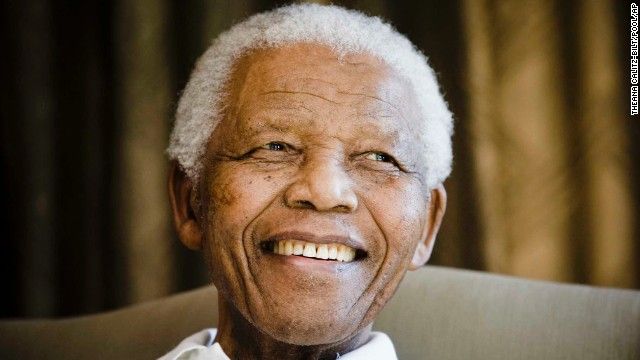
“He didn’t promise miracles. He promised movement.”
The Legacy of 1991
By the end of the year, the ANC had reestablished itself as the dominant political force in South Africa. The man at its helm had become more than a leader—he was a moral compass. His election as president was not just a political shift. It was a signal to the world: the future was being written, and it would be written in the language of dignity.
References:
- 48th National Conference of the African National Congress
- South African History Online – ANC National Conference, July 1991
- Lumen Learning – Mandela and the A
🕊️ 1993: Age 75 — The Prize That Reflected a Nation’s Turning Point
“They stood side by side—not as friends, but as former foes choosing peace over pride.”
On October 15, 1993, the Norwegian Nobel Committee announced that two men—once on opposite sides of South Africa’s bitter divide—would share the world’s most prestigious peace honor. One had spent 27 years in prison. The other had led the government that kept him there. But together, they had begun dismantling the walls of apartheid.
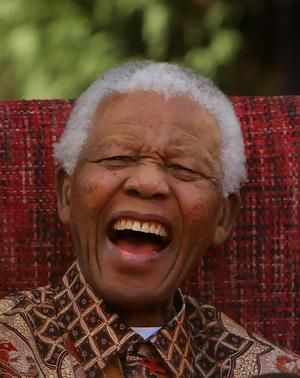
The award was not just for what they had done—it was for what they were still doing. The citation read: “For their work for the peaceful termination of the apartheid regime, and for laying the foundations for a new democratic South Africa.”
The Road to Oslo
The journey to that moment had been anything but smooth. Since Mandela’s release in 1990, he and President F.W. de Klerk had engaged in tense, often fragile negotiations. The Convention for a Democratic South Africa (CODESA) had stalled, restarted, and nearly collapsed. Violence flared in townships. Trust was scarce.
But through it all, Mandela remained steady. He urged calm when others called for retaliation. He insisted on dialogue when others demanded dominance. And de Klerk, to his credit, continued to repeal apartheid laws, unban political parties, and prepare the country for its first democratic elections.
Their relationship was complex. Mandela often criticized de Klerk’s handling of state violence and covert operations. De Klerk, in turn, accused Mandela of being too lenient with militant factions. But both understood something deeper: South Africa’s survival depended on their ability to cooperate.
“They didn’t shake hands for applause. They shook hands for history.”
The Ceremony
On December 10, 1993, in Oslo City Hall, the two men stood before the world. Mandela wore a traditional Madiba shirt. De Klerk wore a suit. Their speeches were different in tone, but united in purpose.
Mandela spoke of reconciliation, of healing, of building a society where all could belong. He honored those who had died in the struggle, those who had suffered, and those who had dared to hope. He didn’t claim victory—he claimed responsibility.
De Klerk acknowledged the pain of the past and the promise of the future. He spoke of courage—not just in fighting, but in forgiving. He recognized that peace was not the absence of conflict, but the presence of justice.
“They didn’t just accept a medal. They accepted a mandate.”
The Impact
The Nobel Peace Prize in 1993 did more than honor two men—it validated a process. It signaled to the world that South Africa was serious about change. It gave momentum to the upcoming 1994 elections, where for the first time, every citizen would have a vote.
It also sent a message to South Africans: that peace was possible, even between enemies. That dignity could be restored without revenge. That leadership meant listening, not just leading.
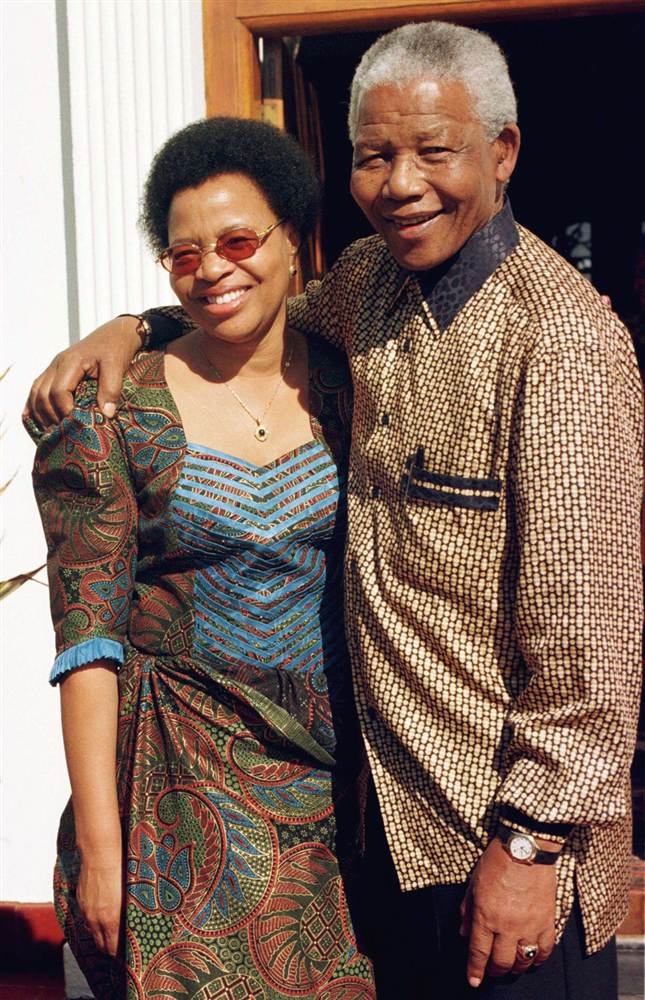
For Mandela, the prize was deeply personal. At 75 years old, he had lived through exile, imprisonment, and revolution. But he had never lost faith in humanity’s ability to rise. The Nobel was not a reward—it was a reminder.
“He didn’t see it as a finish line. He saw it as a starting point.”
🌍 1994: Age 75 — The Day South Africa Breathed as One
“He didn’t just win an election. He won back a nation’s soul.”
The year 1994 was not just a turning point—it was a resurrection. After centuries of colonialism and decades of apartheid, South Africa stood at the edge of transformation. And at the center of that moment was a 75-year-old man who had spent nearly half his life behind bars, yet emerged with more grace than grievance.
From April 26 to 29, South Africans of all races cast their votes in the country’s first multiracial democratic elections. The lines stretched for miles. Some waited for hours. Others wept as they marked their ballots. It wasn’t just a vote—it was a vow. A vow to never go back.
The African National Congress (ANC), the liberation movement turned political party, won 252 of 400 seats in the National Assembly. The result was clear. The people had chosen unity over division, hope over hate.
“He didn’t campaign with promises. He campaigned with presence.”
On May 10, 1994, in the Union Buildings amphitheatre in Pretoria, the inauguration took place. Dignitaries from over 140 countries attended. The air was thick with history. The man who had once been prisoner 466/64 now stood before the world as president.
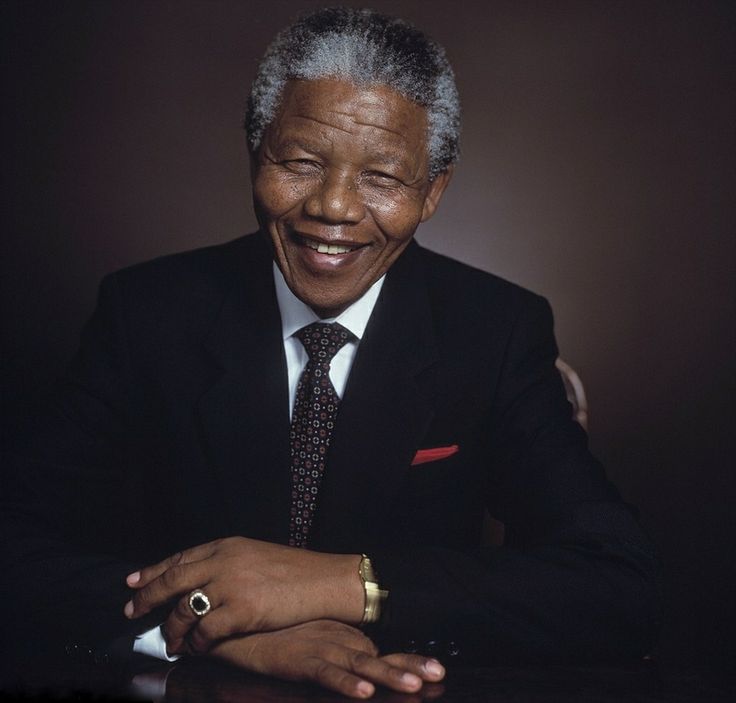
His speech was not triumphant—it was tender. He spoke of healing, of rebuilding, of honoring those who had suffered and those who had dared to dream. He pledged to serve all South Africans, not just those who had voted for him.
“Never, never and never again shall it be that this beautiful land will again experience the oppression of one by another.”
A Government of Unity
Mandela didn’t seek revenge. He sought reconciliation. His cabinet included members of the ANC, the National Party, and the Inkatha Freedom Party. It was a Government of National Unity, designed not to dominate, but to demonstrate cooperation.
He appointed F.W. de Klerk, the outgoing president, as one of two deputy presidents. The other was Thabo Mbeki, his political heir. It was a bold move—proof that leadership meant listening, even to those who once opposed you.
The Work Begins
The challenges were immense. The economy was unequal. The education system was fractured. Communities were still scarred by violence. But Mandela led with calm conviction. He launched the Reconstruction and Development Programme (RDP) to address poverty and inequality. He prioritized housing, healthcare, and jobs.
He also established the Truth and Reconciliation Commission (TRC), chaired by Archbishop Desmond Tutu. It wasn’t about forgetting—it was about facing the past to build the future.
“He didn’t erase history. He embraced it—and asked it to speak.”
The Legacy of 1994
That year didn’t just change South Africa—it changed the world’s understanding of leadership. Mandela showed that power could be gentle. That victory could be shared. That forgiveness could be fierce.
At 75 years old, he became not just a president, but a symbol. A symbol of what humanity could be when it chose dignity over dominance.
References:
- BBC – Mandela becomes SA’s first Black president
- South African History Online – Mandela Presidency
- Wikipedia – Nelson Mandela
🕊️ 1995: Age 76 — The Year South Africa Chose Truth Over Revenge
“He didn’t ask the nation to forget. He asked it to remember—together.”
The year 1995 was South Africa’s first full year under democratic rule. The euphoria of the 1994 elections had given way to the sobering reality of nation-building. The country was free—but fractured. Decades of apartheid had left deep scars: families torn apart, communities brutalized, and truths buried beneath silence.
At 76 years old, the newly elected president understood that political freedom was not enough. The soul of the nation needed healing. And healing required truth.
On July 19, 1995, Mandela signed into law the Promotion of National Unity and Reconciliation Act, officially establishing the Truth and Reconciliation Commission (TRC). It was a radical idea: a court-like body that would investigate human rights violations committed between 1960 and 1994, during the height of apartheid.
But this was not a trial. It was a testimony.
A New Kind of Justice
The TRC was chaired by Archbishop Desmond Tutu, a moral giant in his own right. Its mandate was clear: allow victims to speak, allow perpetrators to confess, and offer amnesty in exchange for full disclosure. It was a model of restorative justice, not retributive punishment.
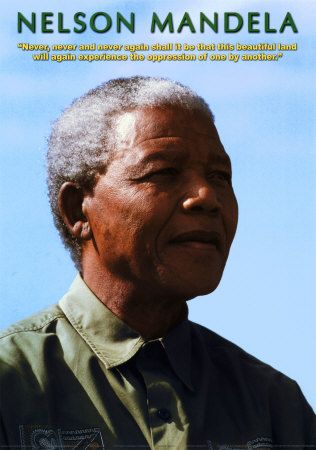
Victims came forward with stories of torture, disappearance, and grief. Families spoke of loved ones who vanished without a trace. Survivors described the pain of being silenced for decades. And perpetrators—some from the highest ranks of the police and military—confessed to acts once hidden behind bureaucracy and fear.
“He didn’t want revenge. He wanted recognition.”
Mandela knew that prosecuting every crime would tear the country apart. But ignoring them would poison its future. The TRC was his answer—a bridge between memory and mercy.
The Human Cost
The hearings were public, raw, and often unbearable. Broadcast on national television, they forced South Africans to confront their past—not as spectators, but as participants. The nation wept together. And in that shared sorrow, something began to shift.
The TRC didn’t erase pain. But it gave it a voice. And that voice became the foundation for reconciliation.
Mandela attended hearings, met with victims, and supported the process with unwavering resolve. He understood that leadership meant facing the hardest truths—not hiding from them.
“He didn’t just build a commission. He built a conscience.”
A Global Model
The TRC became a global symbol of post-conflict healing. Countries emerging from civil war, genocide, and dictatorship looked to South Africa’s model. It wasn’t perfect. But it was powerful.
Mandela’s decision to prioritize truth over punishment was controversial. Some wanted trials. Others wanted silence. He chose a third path—one that demanded courage from both the oppressed and the oppressors.
The Legacy of 1995
By the end of the year, the TRC had begun collecting thousands of testimonies. It would continue its work until 2002, producing a multi-volume report that documented the horrors of apartheid and the resilience of its survivors.
But its true legacy was emotional, not archival. It taught South Africa that reconciliation is not forgetting—it’s remembering with purpose.
At 76, Mandela had already given his youth to the struggle. In 1995, he gave his wisdom to the healing.
🌍 1999: Age 80 — When Power Bowed to Principle
“He didn’t retire. He redefined leadership.”
In 1999, Nelson Mandela, aged 80, stepped down after one presidential term, fulfilling his promise to serve—not rule. He then transformed into a global advocate for peace, human rights, and dignity, becoming a symbol of ethical leadership across continents.
In the final months of 1999, South Africa witnessed a moment that would echo far beyond its borders. Nelson Mandela, the man who had led the country out of apartheid and into democracy, chose to step down after just one term as president. At 80 years old, he didn’t cling to power—he released it with grace. On June 14, 1999, he handed over the presidency to Thabo Mbeki, his deputy and successor, marking the end of a five-year term that had reshaped the nation.
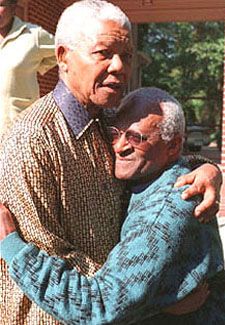
Mandela’s decision wasn’t political theater—it was a moral statement. In a continent where leaders often overstayed their welcome, he modeled restraint. His presidency had been about transition, not domination. He had always said, “I will serve only one term,” and he kept that promise. His departure was not a retreat—it was a renewal.
He left the Union Buildings not with fanfare, but with quiet dignity. No golden farewell. No political maneuvering. Just a calm walk into history. And in doing so, he taught the world that true leadership is not about how long you hold office—it’s about how deeply you serve.
But Mandela didn’t fade into silence. He stepped into a new role—one that would take him beyond South Africa’s borders and into the heart of global advocacy. Through the Nelson Mandela Foundation, he focused on peace, education, and human rights. He became a voice for the voiceless, speaking out against poverty, inequality, and injustice.
In January 1999, he addressed the World Economic Forum in Davos, reflecting on South Africa’s democratic journey. His speech emphasized that economic growth must serve humanity. He urged global leaders to invest in justice, not just markets. He said, “We must ensure that globalization does not become a synonym for the marginalization of the poor.”
Mandela’s global influence surged. He supported peace efforts in Burundi, DR Congo, and the Middle East. He met with heads of state, activists, and youth leaders. He didn’t seek headlines—he sought healing. His presence brought calm. His words carried weight.
He also became a fierce champion for HIV/AIDS awareness, especially after losing his son, Makgatho, to the disease in 2005. Even in 1999, he warned that silence around the epidemic was costing lives. He used his platform to break stigma and promote treatment. “AIDS is no longer just a disease,” he said. “It is a human rights issue.”
Mandela’s post-presidency was not passive—it was purposeful. He mentored emerging leaders, reminding them that humility is strength. He often said, “I am not a saint, unless you think of a saint as a sinner who keeps on trying.” That humility made him relatable. That persistence made him unforgettable.
By the end of 1999, Mandela had become more than a former president—he was a global elder. His decision to serve one term was not just political—it was philosophical. It reflected his belief in institutions over individuals, in democracy over dynasty. He showed the world that power, when used wisely, can be relinquished with honor.
He didn’t just leave office. He left a blueprint.
References:
- Mandela and Global Human Rights: A Tribute
- Mandela’s Legacy Inspires Global Action
- Mandela’s 1999 Davos Address – World Economic Forum
🌍 2003: Age 85 — Nelson Mandela Builds a Legacy Beyond Leadership
“He didn’t just leave office. He built a foundation for justice.”
In 2003, at age 85, Nelson Mandela launched the Nelson Mandela Foundation to institutionalize his lifelong commitment to social justice, dialogue, and human dignity. It marked the beginning of his post-presidency legacy as a global moral force.
By the year 2003, Nelson Mandela had already stepped down from the presidency of South Africa, choosing principle over power. But even at 85 years old, he refused to retreat into ceremonial silence. Instead, he chose to build something enduring—an institution that would carry his values forward long after his voice grew quiet.
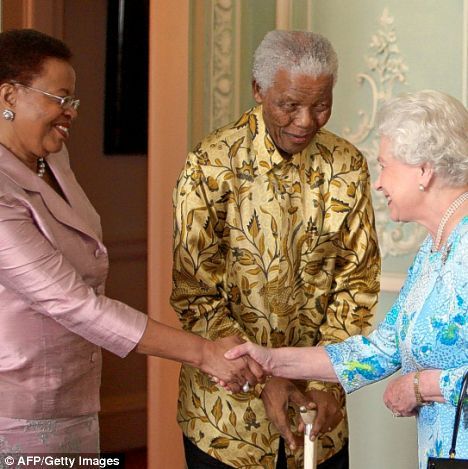
On July 19, 2003, Nelson Mandela formally launched the Nelson Mandela Foundation, a non-profit organization dedicated to promoting social justice, human rights, and dialogue across divides. This wasn’t a retirement project. It was a strategic move to ensure that the moral momentum of his presidency would not fade—it would evolve.
The Foundation was born out of a simple but profound realization: Mandela’s legacy was too vast, too vital, to be left to memory alone. It needed structure. It needed continuity. It needed a platform that could turn inspiration into action.
Mandela said at the time, “The Foundation will be our vehicle to continue the work of promoting freedom and equality, and to ensure that the values we fought for are never lost.” It was a declaration that his fight was not over—it was simply changing form.
The Foundation’s initial focus was on archiving Mandela’s personal papers, speeches, and correspondence. But it quickly expanded into a dynamic hub for public dialogue, community engagement, and policy advocacy. It became a space where difficult conversations could happen—about race, poverty, education, and reconciliation.
In the same year, Mandela also helped launch the Mindset Network, an educational satellite multimedia initiative aimed at transforming South Africa’s post-apartheid education system. He understood that justice wasn’t just about laws—it was about learning. He believed that every child deserved access to quality education, and that technology could help bridge the gaps left by decades of inequality.
Mandela’s global stature gave the Foundation immediate credibility. World leaders, scholars, and activists gravitated toward its mission. But Mandela insisted that it remain grounded in humility. He didn’t want a shrine. He wanted a workshop—a place where ideas could be tested, challenged, and refined.
The Foundation’s motto became: “Memory. Dialogue. Legacy.” These weren’t just words. They were pillars. Memory meant preserving the truth of the past. Dialogue meant confronting the present with courage. Legacy meant shaping the future with integrity.
In November 2003, the Foundation hosted its inaugural Annual Lecture, delivered by former U.S. President Bill Clinton. The theme was global poverty and development. Clinton praised Mandela’s leadership and urged Western nations to support Africa through debt relief, trade, and investment. It was a powerful moment—two former presidents, one stage, one shared vision.
But Mandela didn’t bask in the spotlight. He used it to illuminate others. He said, “It is in your hands now.” That phrase would become a mantra—reminding the world that change is not the responsibility of heroes alone. It belongs to all of us.
By the end of 2003, the Nelson Mandela Foundation had already begun shaping discourse in South Africa and beyond. It wasn’t just preserving Mandela’s legacy—it was activating it. It became a moral compass in a world often lost in politics.
At 85, Mandela had every reason to rest. But rest was never his rhythm. He believed that justice was a lifelong pursuit. And through the Foundation, he ensured that his pursuit would never pause.
He didn’t just leave office. He left a blueprint. And in 2003, he built the institution that would carry it forward.
References:
Mandela’s Speech at Mindset Network Launch – July 16, 2003
Nelson Mandela Foundation – Annual Lecture 2003: Bill Clinton
Nelson Mandela Foundation – Wikipedia Overview
🌍 2009: Age 91 — Nelson Mandela Becomes a Day, Not Just a Name
“He didn’t ask for celebration. He inspired service.”
In 2009, the world honored Nelson Mandela not with monuments, but with a movement. At 91 years old, Nelson Mandela had already stepped back from public life, yet his presence remained a moral compass for humanity. That year, the United Nations made a decision that turned his birthday into a global call to action.
On November 10, 2009, the United Nations General Assembly unanimously declared July 18—Nelson Mandela’s birthday—as Nelson Mandela International Day. It was more than a tribute. It was a transformation. Nelson Mandela was no longer just a name in history books—he became a symbol of service, dignity, and global citizenship.
The resolution was co-sponsored by over 165 member states, a rare show of unity across continents. The purpose was clear: to recognize Nelson Mandela’s lifelong dedication to peace, reconciliation, and social justice. But this wasn’t meant to be a ceremonial holiday. It was designed as a movement.
The UN encouraged people everywhere to devote 67 minutes of their time—one minute for each year Nelson Mandela spent in public service—to helping others. Whether it was mentoring a child, cleaning a school, feeding the hungry, or planting a tree, the message was simple: honor Nelson Mandela by living his values.
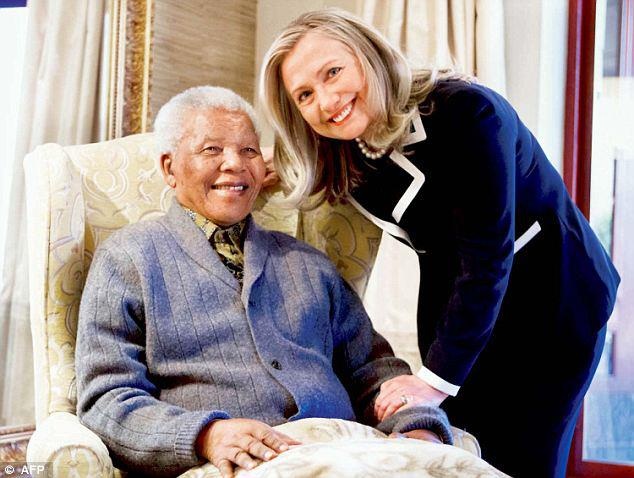
Nelson Mandela didn’t attend the UN session. He was in quiet retirement, far from the spotlight. But his foundation responded with humility and hope, saying, “We hope this signals the beginning of greater involvement by the global community in this movement for good.” The Nelson Mandela Foundation, established in 2003, became the heartbeat of this initiative, ensuring that Nelson Mandela’s legacy remained active, not archived.
The declaration came at a time when the world was grappling with economic uncertainty, rising inequality, and post-conflict rebuilding. Nelson Mandela’s example—of forgiveness, resilience, and moral clarity—offered a compass. The UN didn’t just honor Nelson Mandela. It activated his spirit.
The first official Nelson Mandela International Day would be held the following year, in 2010. But in 2009, the groundwork was laid. Civil society groups, schools, and governments began preparing. The idea was revolutionary: make every July 18 a day of service, not ceremony.
Nelson Mandela’s legacy had always been about more than politics. It was about humanity. He once said, “It is in your hands now.” That phrase became the heartbeat of Nelson Mandela Day. It reminded the world that legacy is not inherited—it’s lived.
By the end of 2009, Nelson Mandela International Day was more than a UN resolution. It was a global invitation—to serve, to reflect, and to rise. The keyword wasn’t just Nelson Mandela—it was action.
Nelson Mandela didn’t ask for celebration. He inspired service. He didn’t want statues. He wanted schools. He didn’t want applause. He wanted accountability. And in 2009, the world listened.
At 91, Nelson Mandela had already given everything—his youth, his freedom, his presidency. Now, the world gave something back. But Nelson Mandela didn’t want gifts. He wanted commitment.
The declaration also marked a shift in how the world viewed leadership. Nelson Mandela wasn’t just a former president. He was a symbol of what humanity could be when guided by compassion. He had become a day, a movement, a mirror.
Nelson Mandela International Day wasn’t just about remembering. It was about becoming. Becoming more generous. More just. More human. And in that becoming, Nelson Mandela’s legacy grew stronger.
He didn’t just leave office. He left a blueprint. And in 2009, the world began to follow it.
References:
- UN Press Release – GA/10885
- Nelson Mandela Foundation – UN Declares Mandela Day
- UNODC – Mandela Day Overview
🕊️ 2013: Age 95 — Nelson Mandela’s Final Goodbye Echoes Across the World
“He didn’t just pass away. He passed on a legacy.”
On December 5, 2013, Nelson Mandela died at age 95 in Johannesburg. His passing marked the end of a life devoted to justice, and the beginning of a global reflection on what it means to lead with courage, humility, and heart.
n the quiet evening of December 5, 2013, the world lost one of its greatest moral leaders. At 20:50 local time, Nelson Mandela passed away at his home in Houghton, Johannesburg, surrounded by family. He had battled a prolonged respiratory infection, and though his body had grown frail, his spirit remained unshaken.
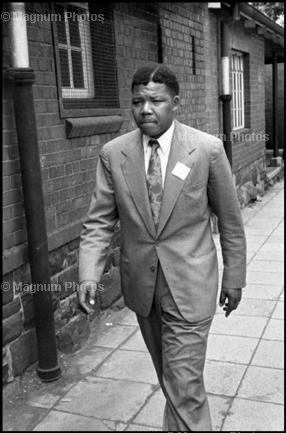
Nelson Mandela was 95 years old. His life had spanned colonial rule, apartheid, revolution, imprisonment, presidency, and global advocacy. And now, it had come full circle—ending not in exile or conflict, but in peace.
The announcement came from President Jacob Zuma, who addressed the nation on television at 23:45, saying, “Our nation has lost its greatest son.” The news spread instantly. Candlelight vigils formed outside Mandela’s home. Flags were lowered. Tributes poured in from every corner of the globe.
Nelson Mandela’s death was not just a national event—it was a global moment. Leaders from over 90 countries expressed condolences. Cities lit up monuments. Churches, mosques, and temples held prayers. Social media overflowed with messages of gratitude, grief, and remembrance.
But amid the mourning, there was celebration. Celebration of a life that had changed the course of history. Nelson Mandela had taught the world that forgiveness is stronger than fear, and that dignity can survive even the darkest prison.
In the days that followed, South Africa entered a period of official mourning. A memorial service was held on December 10 at FNB Stadium in Soweto, attended by thousands—including presidents, prime ministers, royalty, and ordinary citizens. It was one of the largest gatherings of global leaders in modern history.
Nelson Mandela’s body lay in state at the Union Buildings in Pretoria from December 11 to 13, allowing the public to pay their respects. The lines stretched for kilometers. People waited for hours. Some sang. Others wept. All came to honor the man who had given them hope.
On December 15, Nelson Mandela was laid to rest in Qunu, his ancestral village in the Eastern Cape. The funeral was intimate, dignified, and deeply symbolic. His coffin was draped in the South African flag. Military honors were rendered. His grandchildren spoke. His legacy was sealed.
Throughout this period, the Nelson Mandela Foundation played a central role in coordinating tributes and preserving his memory. The Foundation reminded the world that Mandela’s work was not finished. “Let us continue to build the society he dreamed of,” they said.
🧠 Conclusion: Nelson Mandela’s Final Chapter Was Not an Ending—It Was a Handing Over
On December 5, 2013, the world didn’t just lose a leader—it inherited a legacy. Nelson Mandela, at age 95, passed away in Johannesburg, leaving behind not silence, but a surge of reflection, responsibility, and remembrance. His death was not a moment of closure. It was a moment of awakening.
Nelson Mandela had spent his life turning pain into purpose. From the shadows of Robben Island to the presidency of a divided nation, he taught the world that dignity can survive even the darkest prison. And in his final years, he became more than a statesman—he became a symbol. A symbol of what humanity could be when guided by compassion, courage, and conscience.
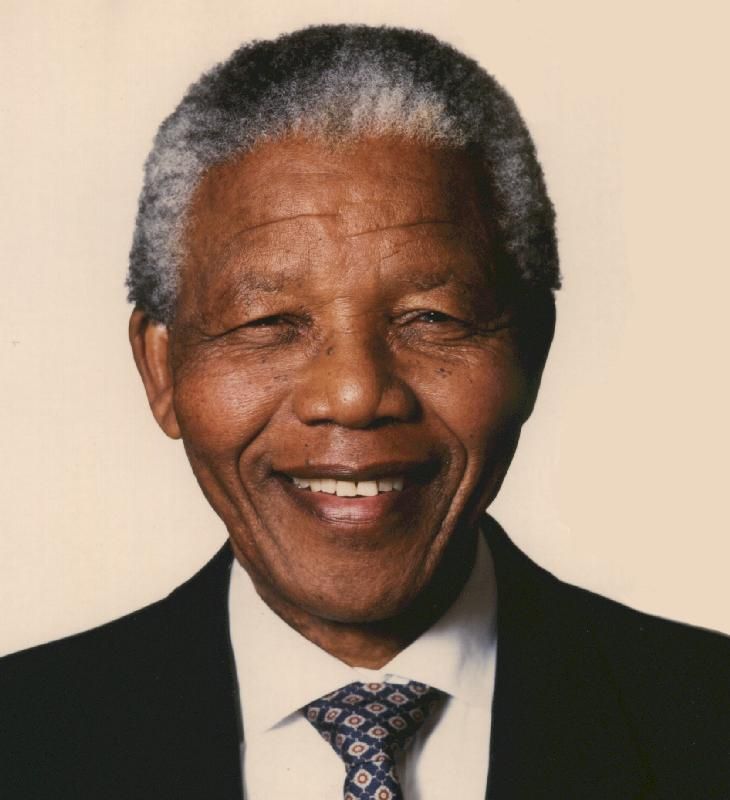
The global response to his passing was unprecedented. Leaders from every continent paid tribute. Cities lit up monuments. Millions gathered in prayer, song, and silence. But the most powerful tribute came not from governments—it came from ordinary people. From children who learned his name in classrooms. From activists who carried his message into protests. From communities who saw in him the possibility of peace.
Nelson Mandela’s legacy is not carved in stone—it’s carried in action. It lives in the 67 minutes of service on Mandela Day. It lives in the work of the Nelson Mandela Foundation. It lives in every act of forgiveness, every stand for justice, every voice that refuses to be silenced.
He didn’t ask to be remembered. He asked to be continued.
And that is the essence of his final chapter. Nelson Mandela didn’t leave us with instructions. He left us with inspiration. He didn’t pass away. He passed on a responsibility—to lead with humility, to fight with integrity, and to serve with heart.
Internal Links: 1.https://historyverse7.com/mahatma-gandhi/ 2.https://historyverse7.com/jawaharlal-nehru/
External Links: 1.https://www.britannica.com/biography/Nelson-Mandela 2.https://www.nelsonmandela.org/biography
📘 FAQ: Understanding Nelson Mandela
1. What did Nelson Mandela teach the world about stepping down from power?
Ans: Nelson Mandela showed that true leadership isn’t about how long you hold office—it’s about how gracefully you let go. By serving only one term as president, he taught that legacy is built not by clinging to power, but by empowering others to lead.
2. How did Mandela’s silence speak louder than speeches in his final years?
Ans: In retirement, Mandela rarely spoke publicly. Yet his silence was profound—it reminded the world that dignity doesn’t need a microphone. His quiet presence became a moral compass, guiding global conversations on justice, peace, and humility.
3. Why is Mandela’s name more than a name—it’s a responsibility?
Ans: Nelson Mandela isn’t just remembered. He’s invoked. His name carries weight because it demands action. To say “Mandela” is to commit to fairness, forgiveness, and fierce compassion. It’s not just a tribute—it’s a challenge.
4. What was Mandela’s greatest act of rebellion that no prison could contain?
Ans: His greatest rebellion wasn’t political—it was emotional. Mandela refused to hate. Even after 27 years in prison, he chose reconciliation over revenge. That choice defied every expectation and rewrote the rules of resistance.
5. How does Mandela’s legacy live in ordinary people, not just history books?
Ans: Mandela’s legacy isn’t locked in archives—it’s alive in classrooms, protests, and quiet acts of kindness. Every time someone forgives when it’s hard, speaks truth to power, or lifts another from despair, Mandela walks again.
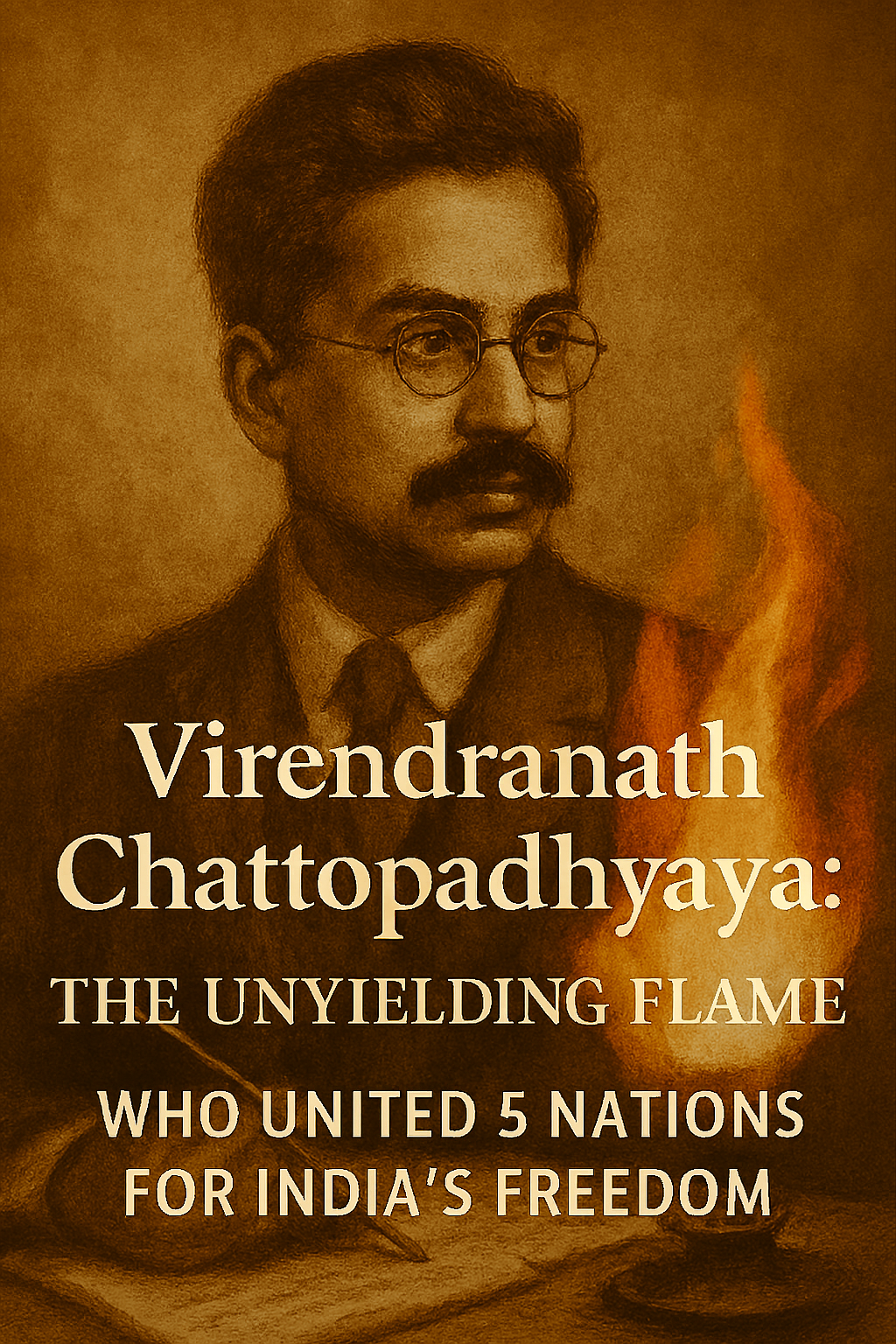
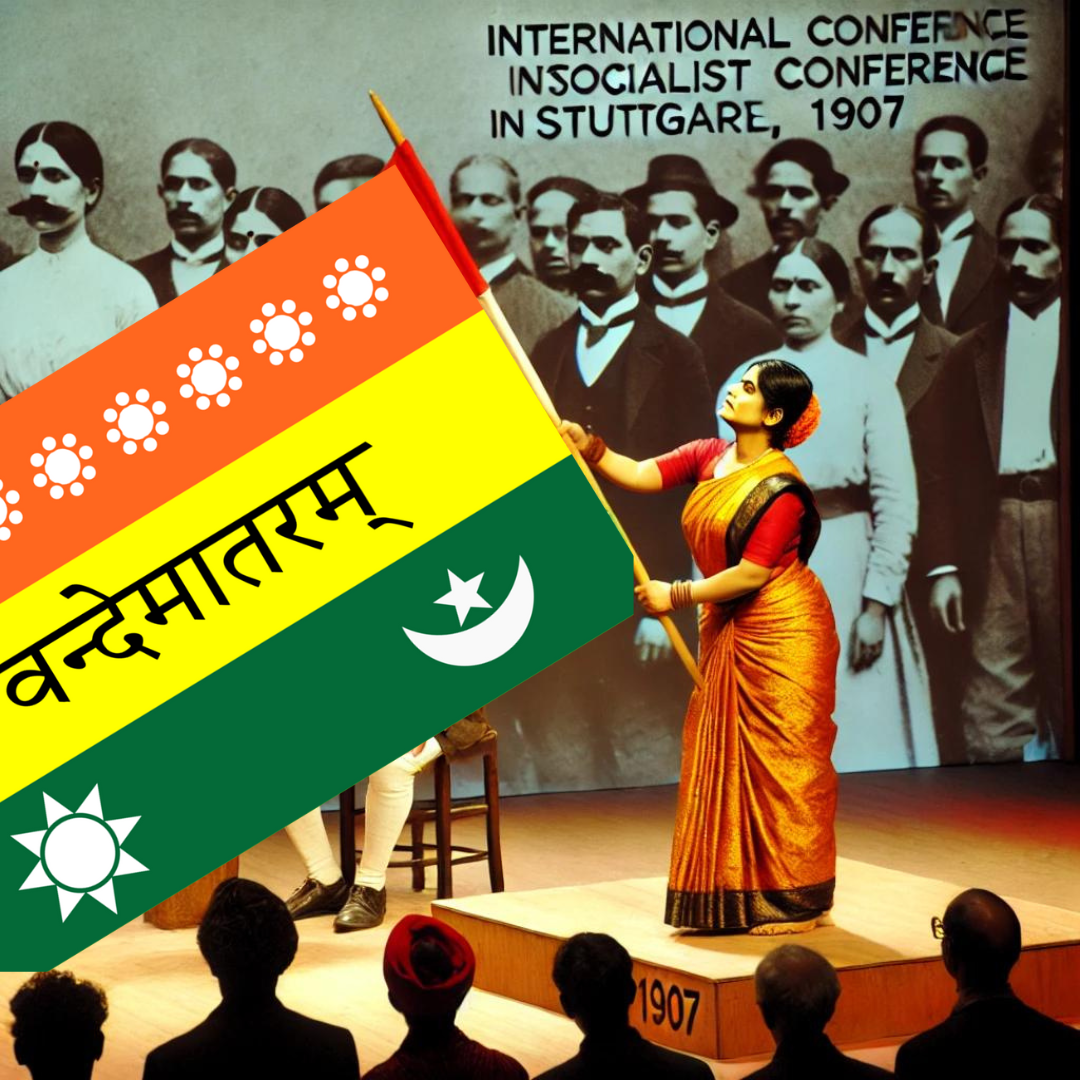
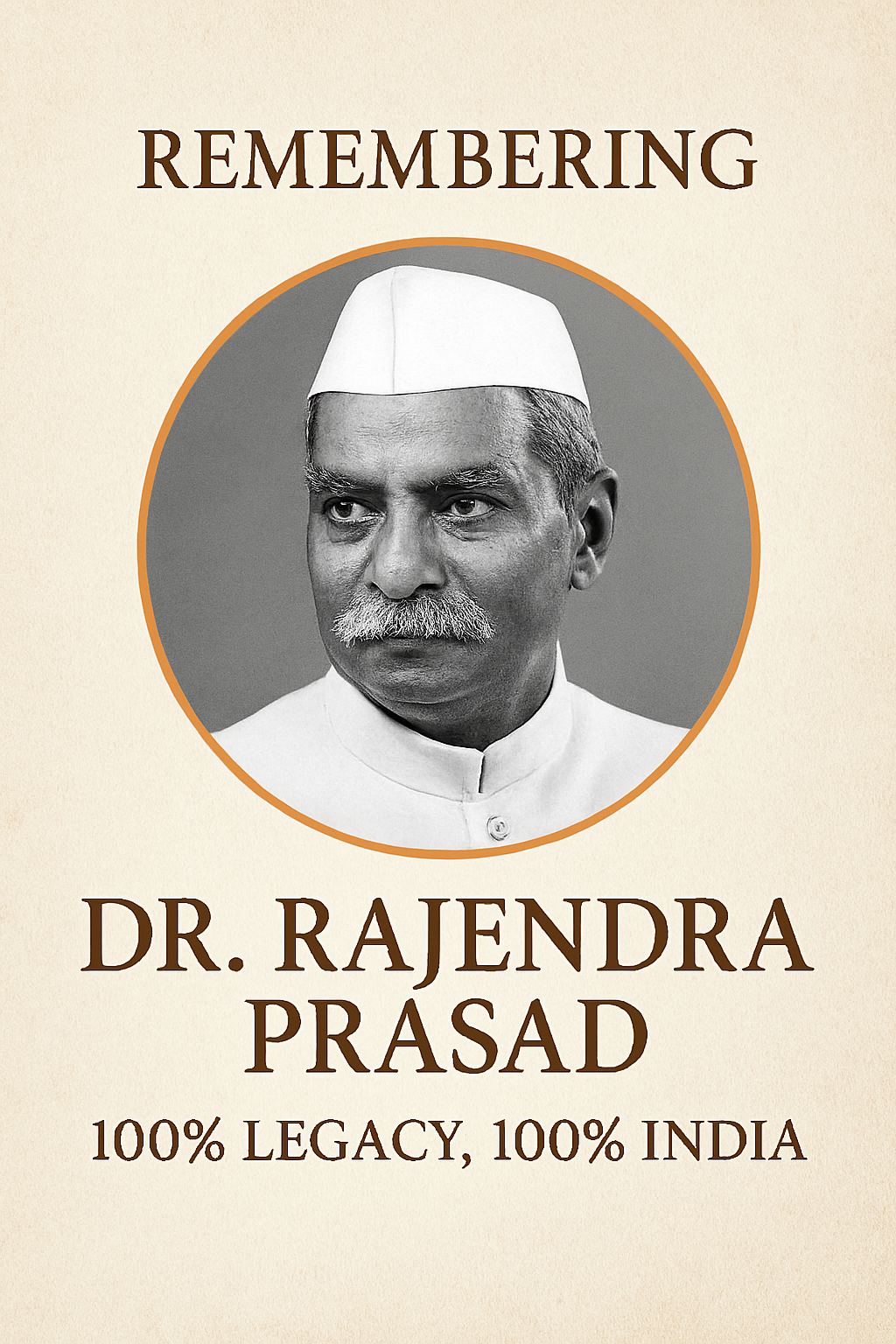
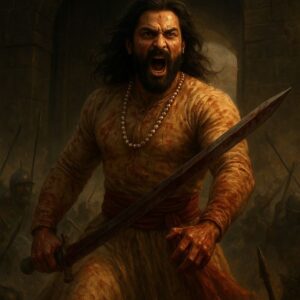
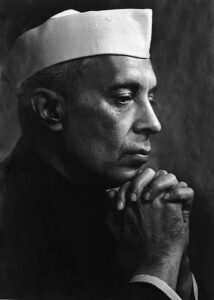
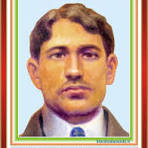
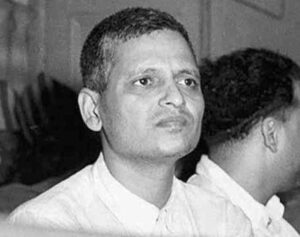
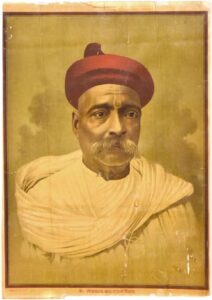
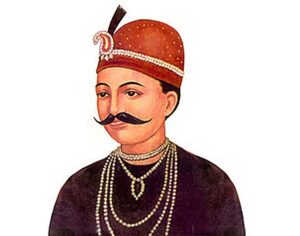
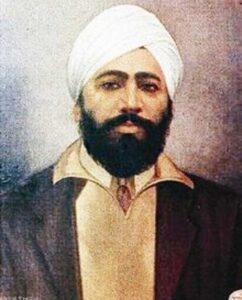
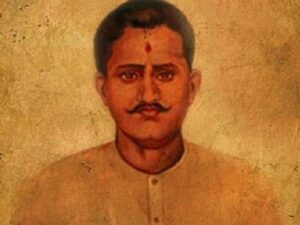
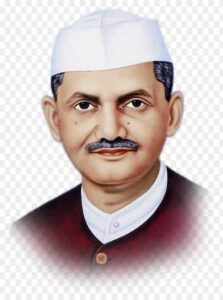
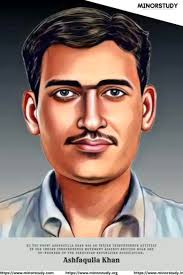
1 comment